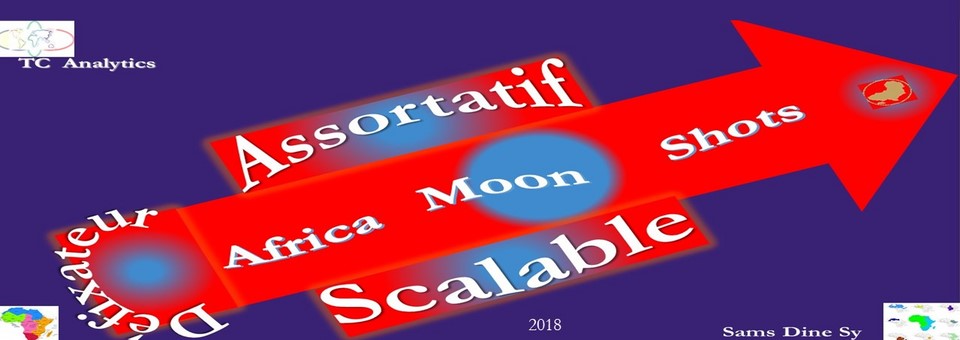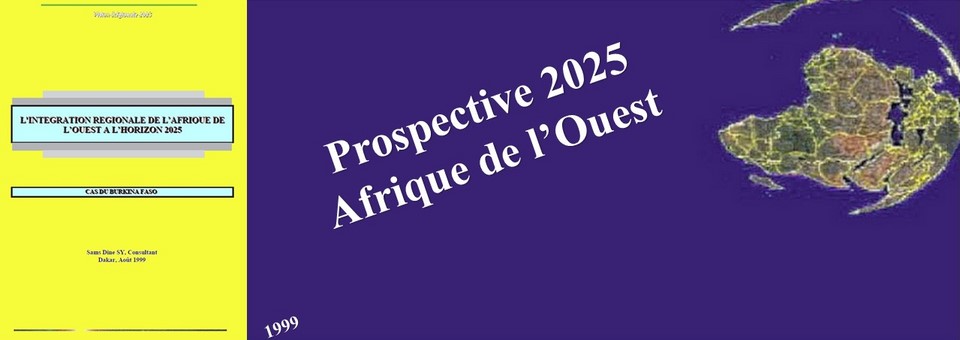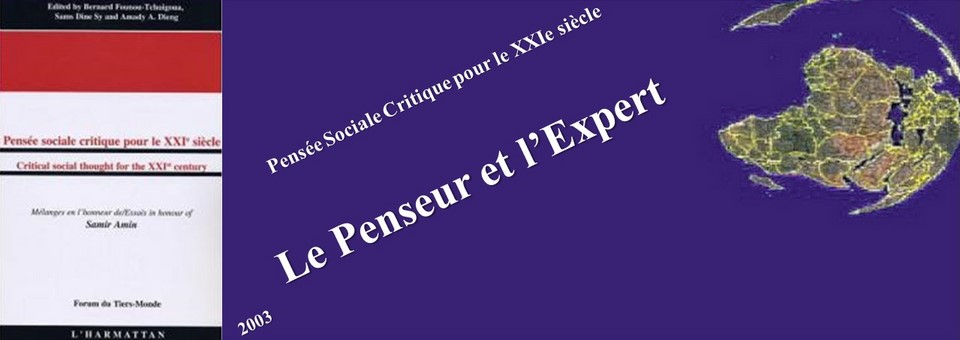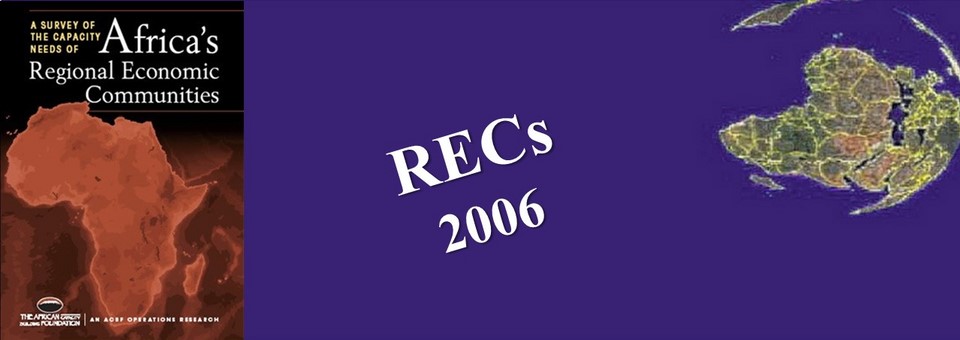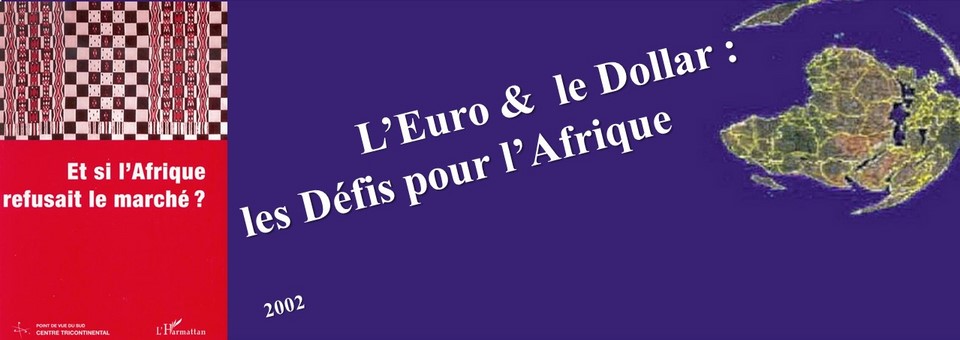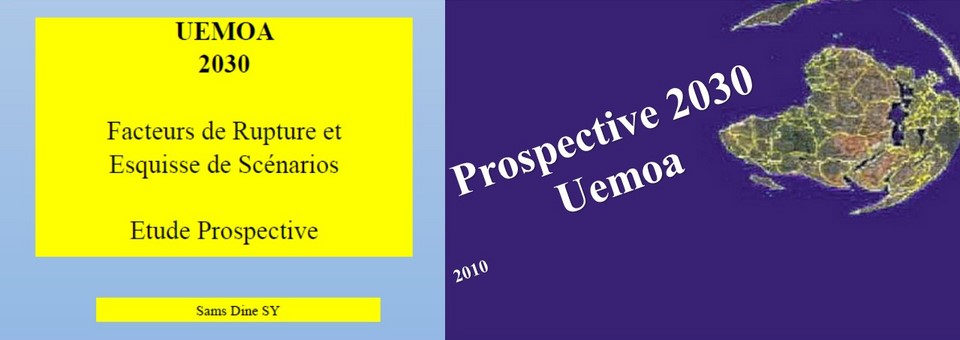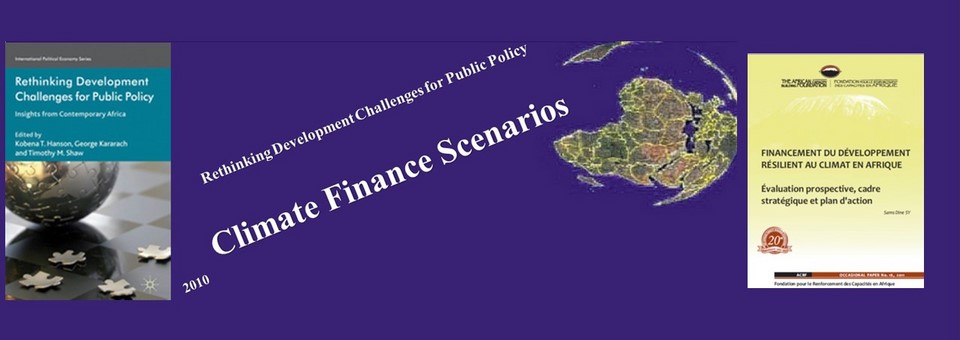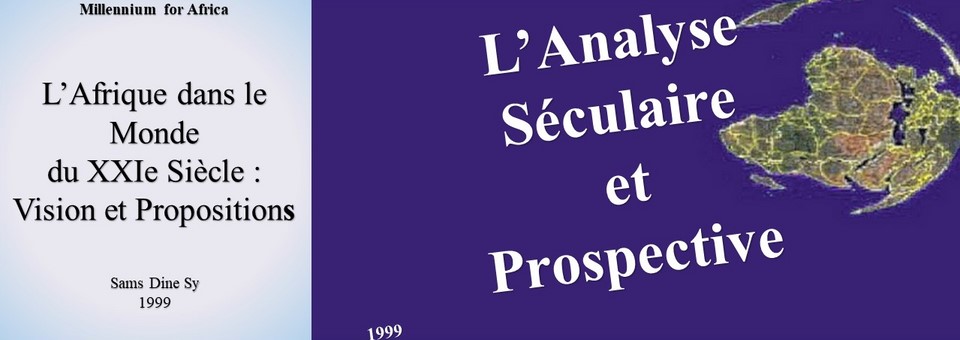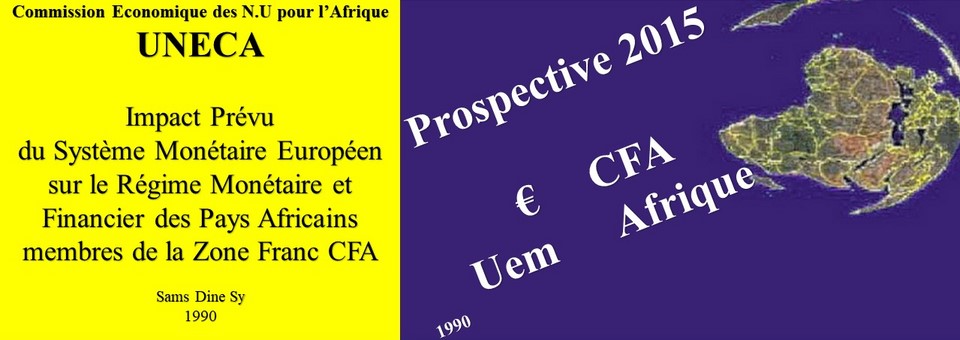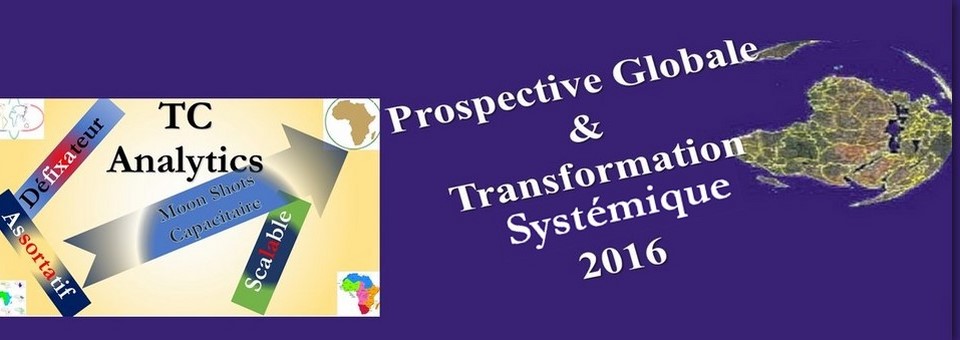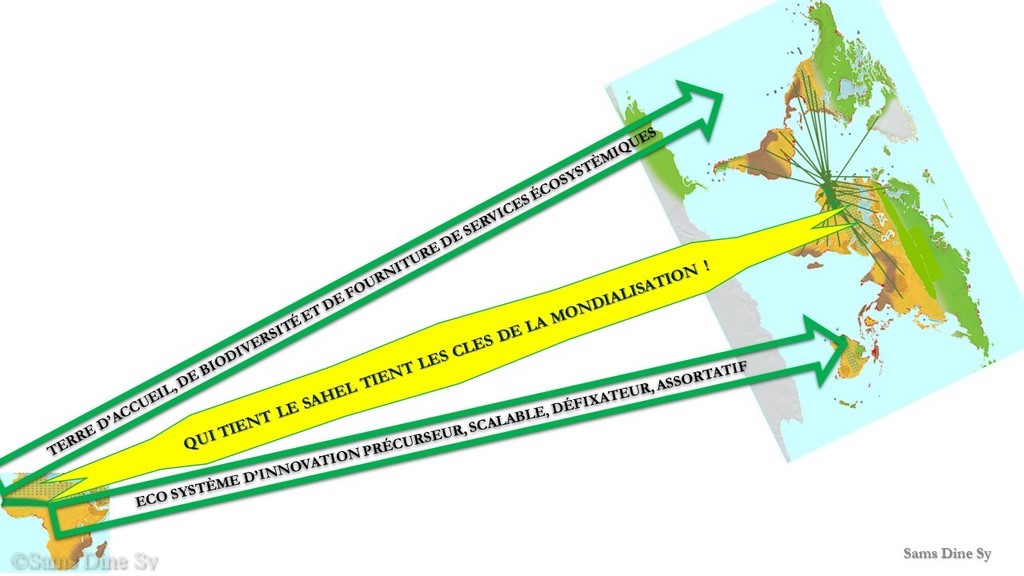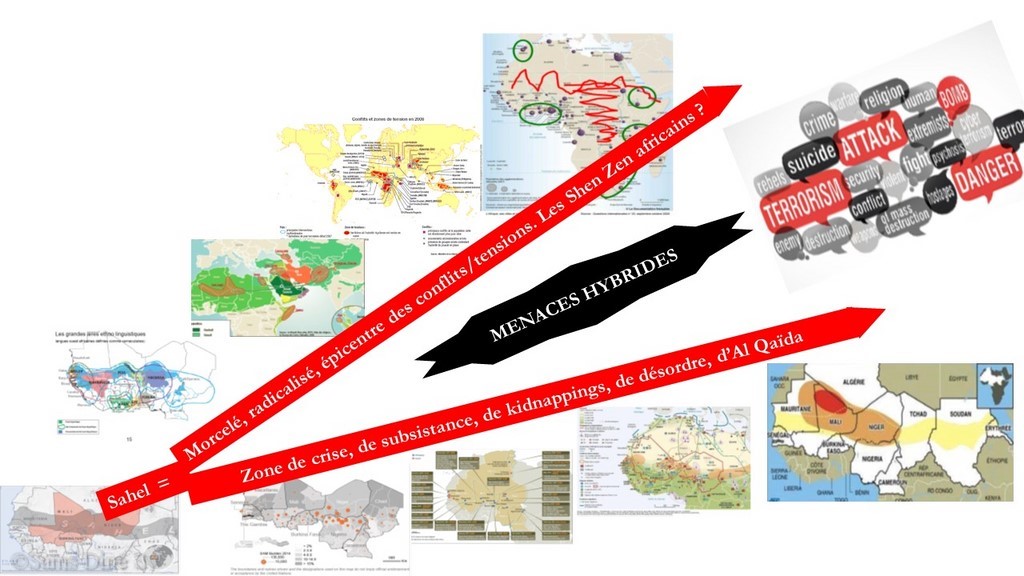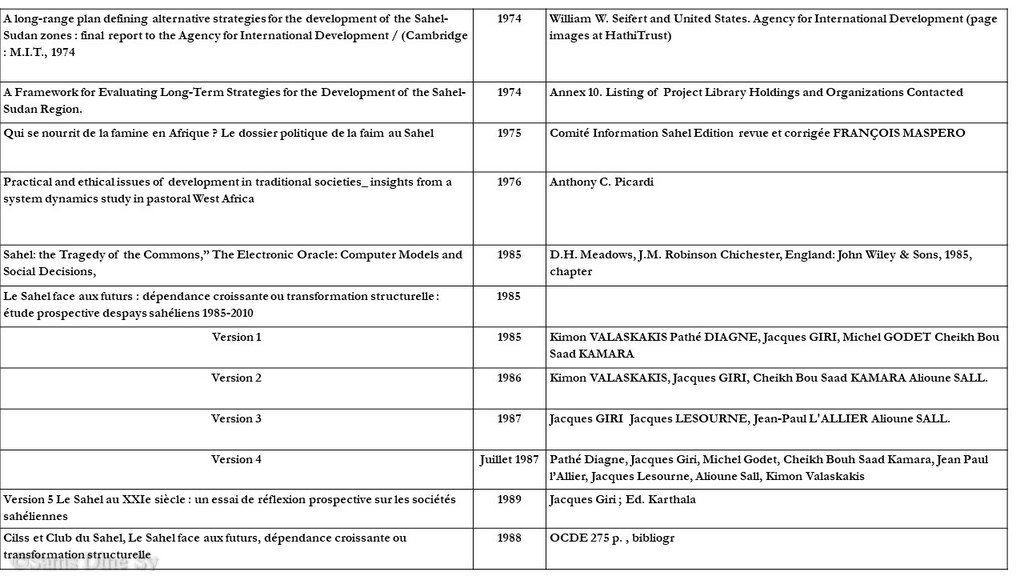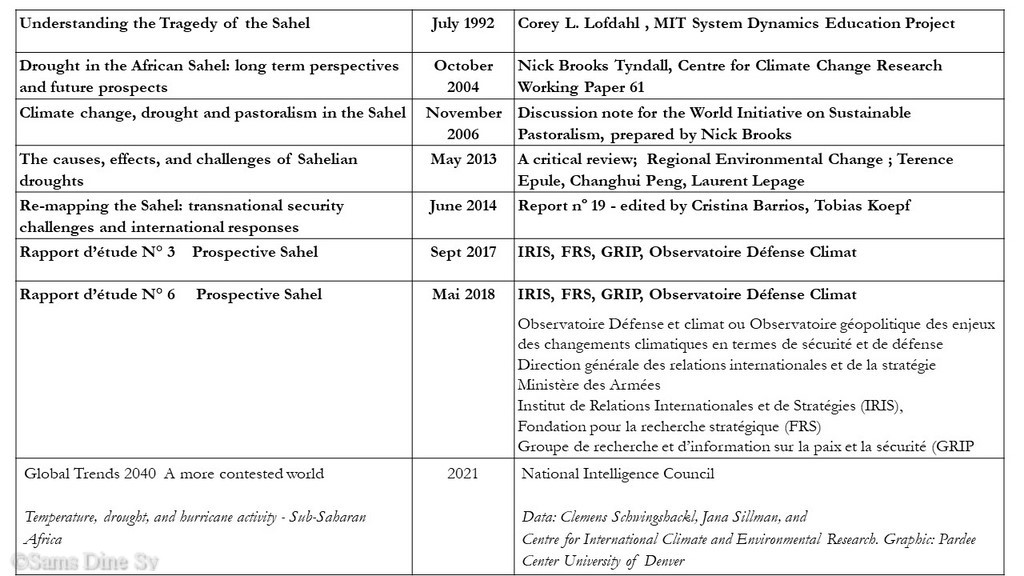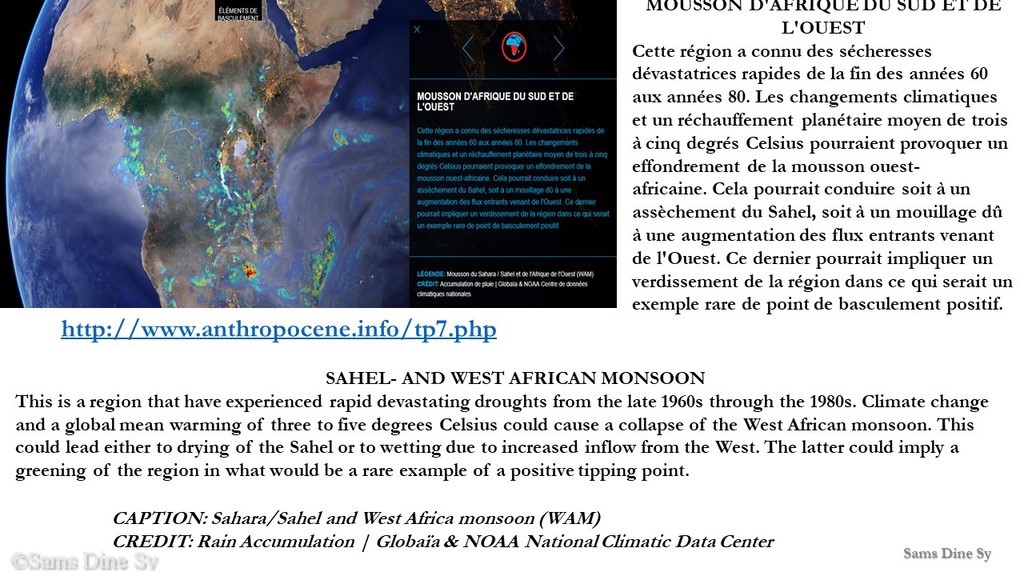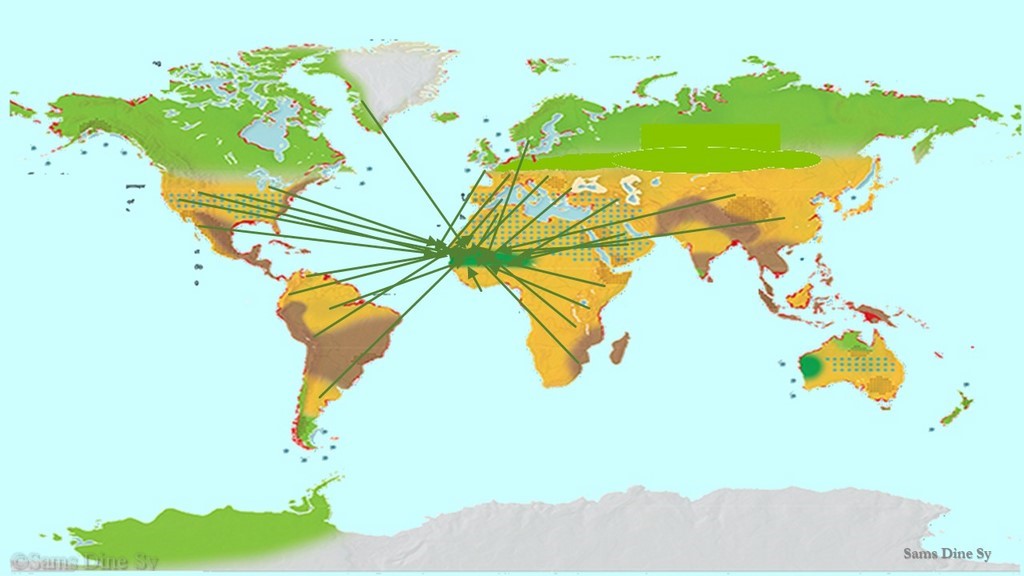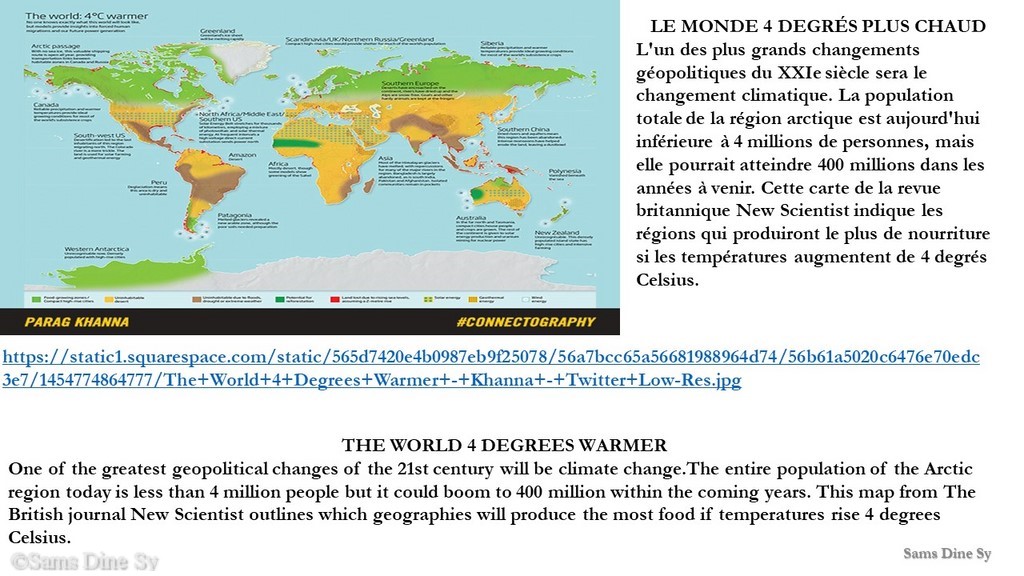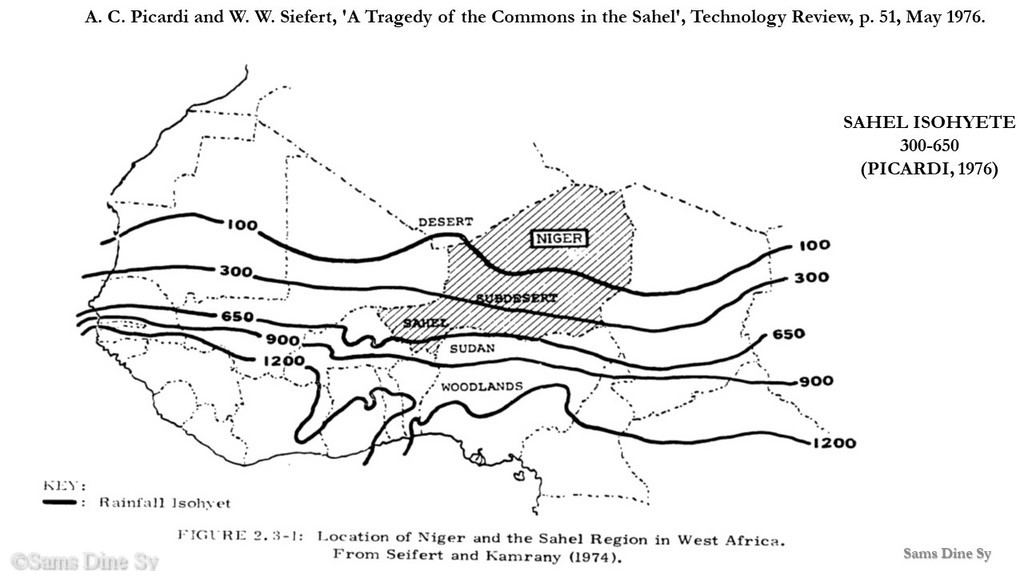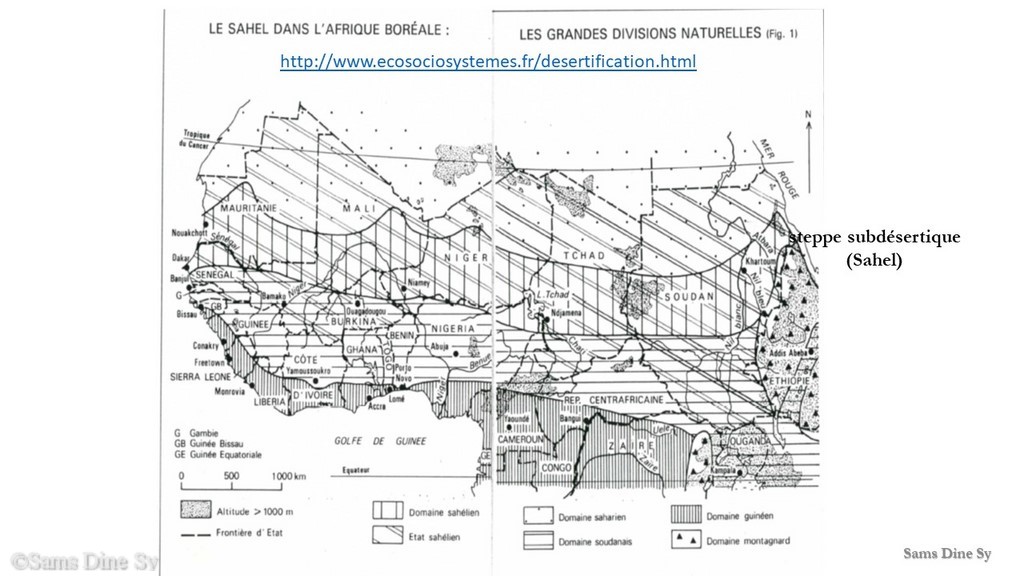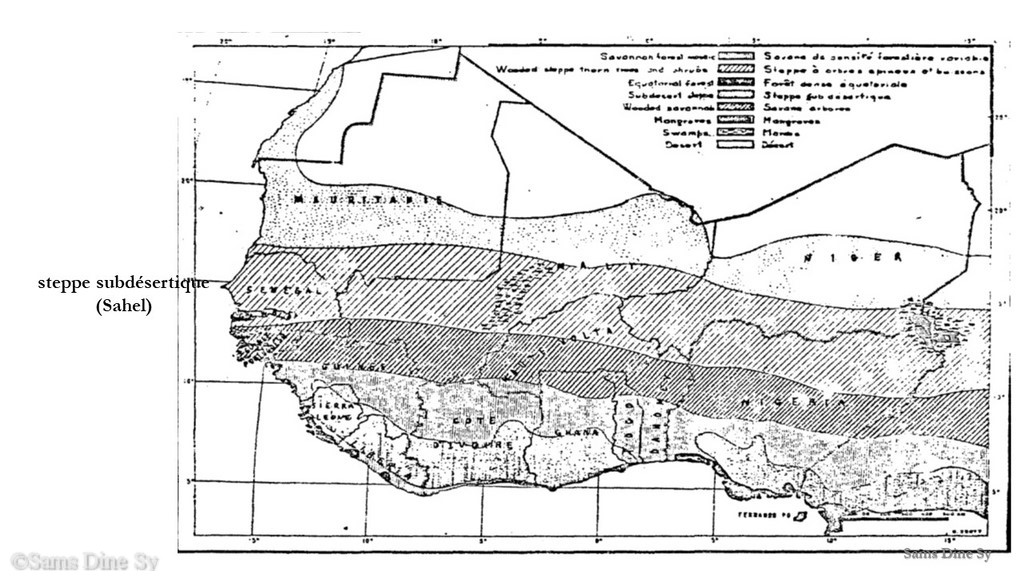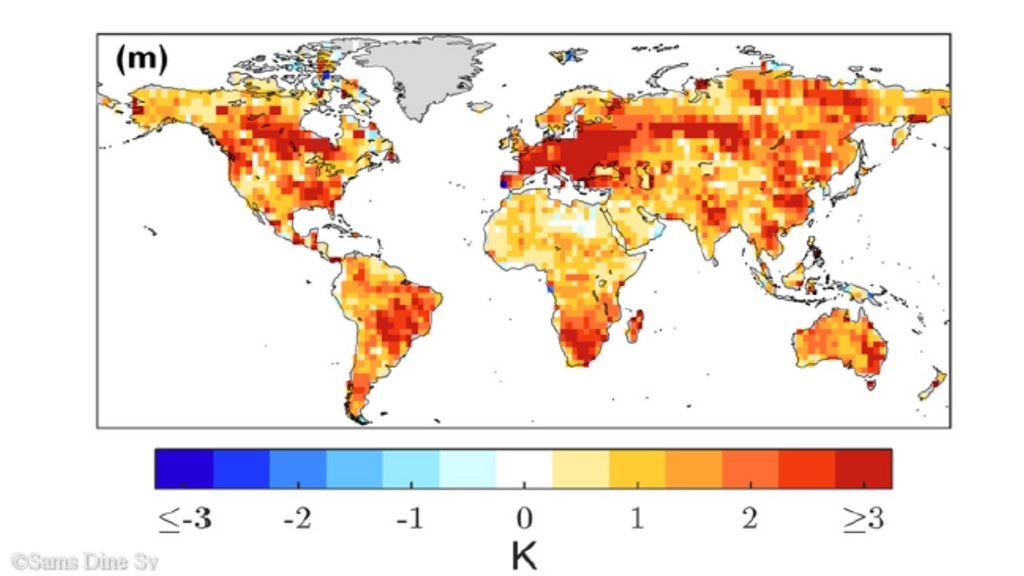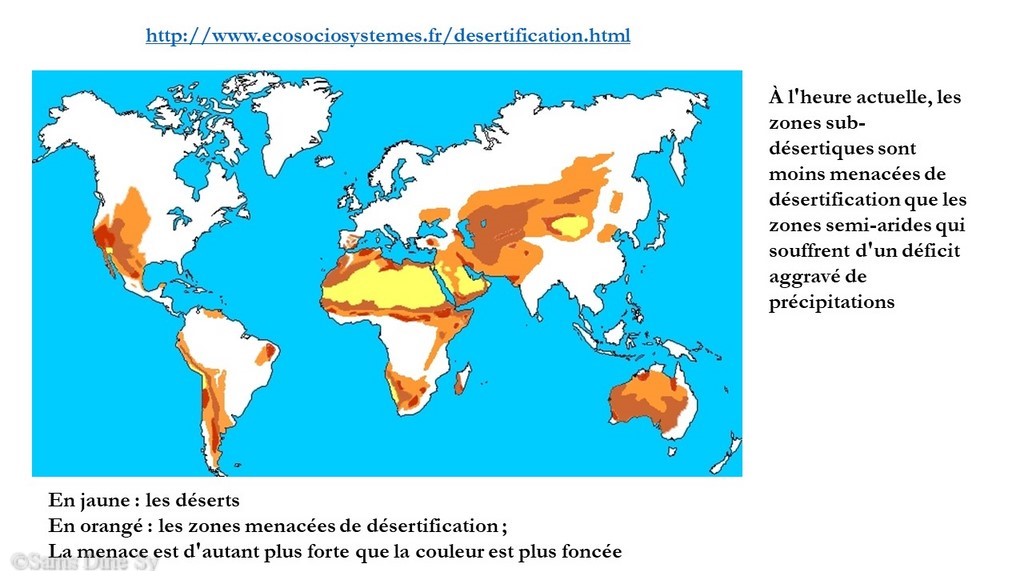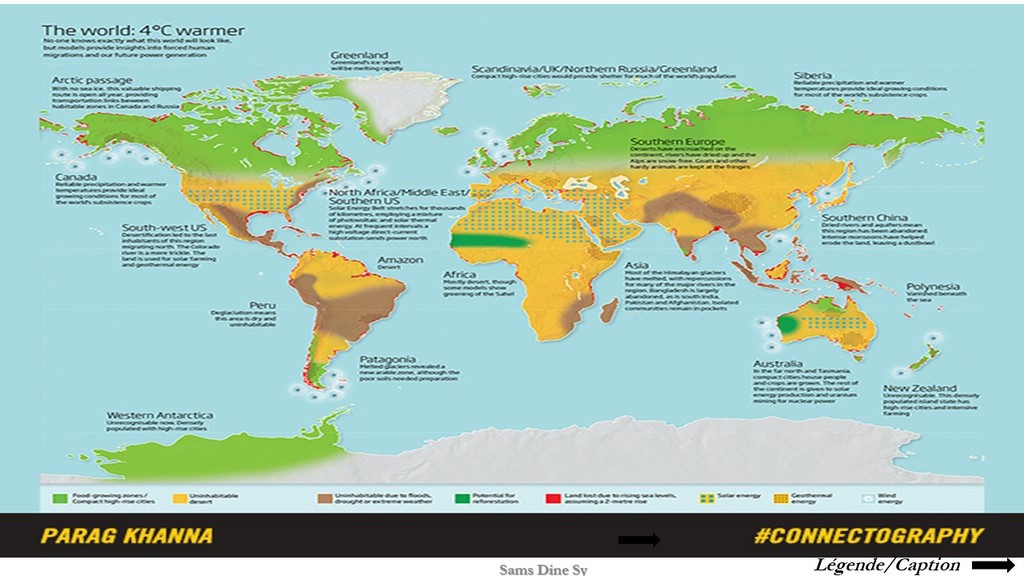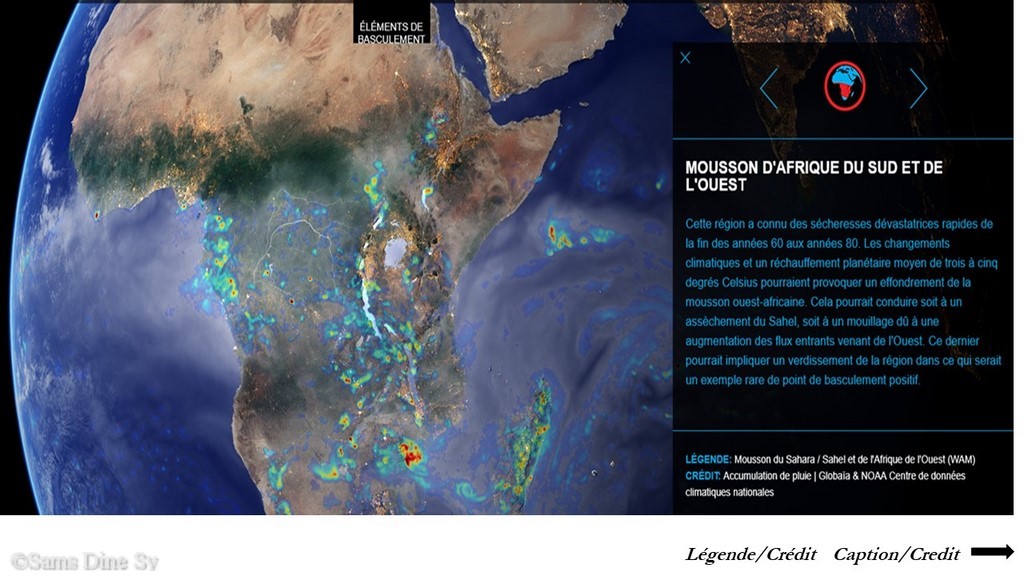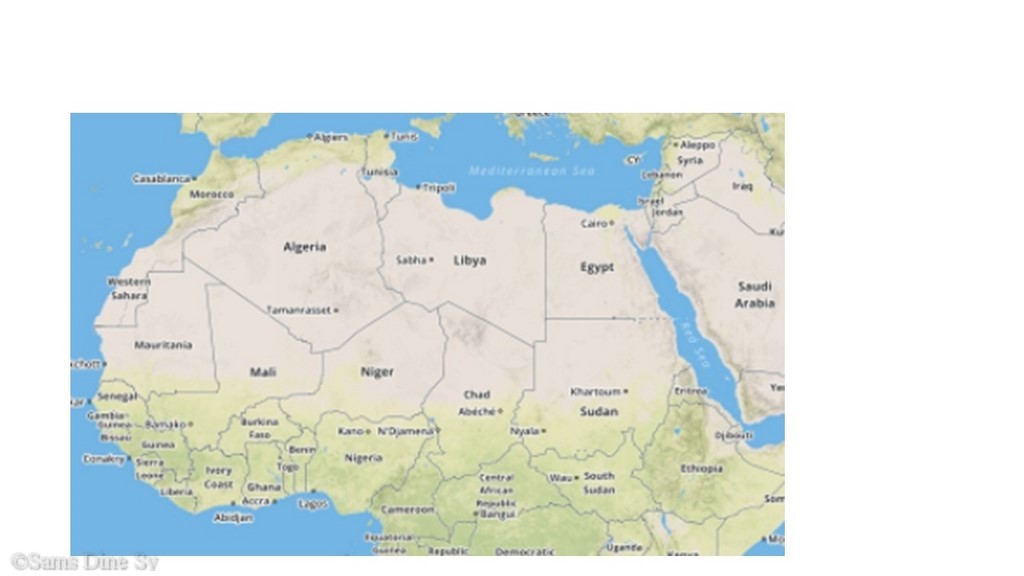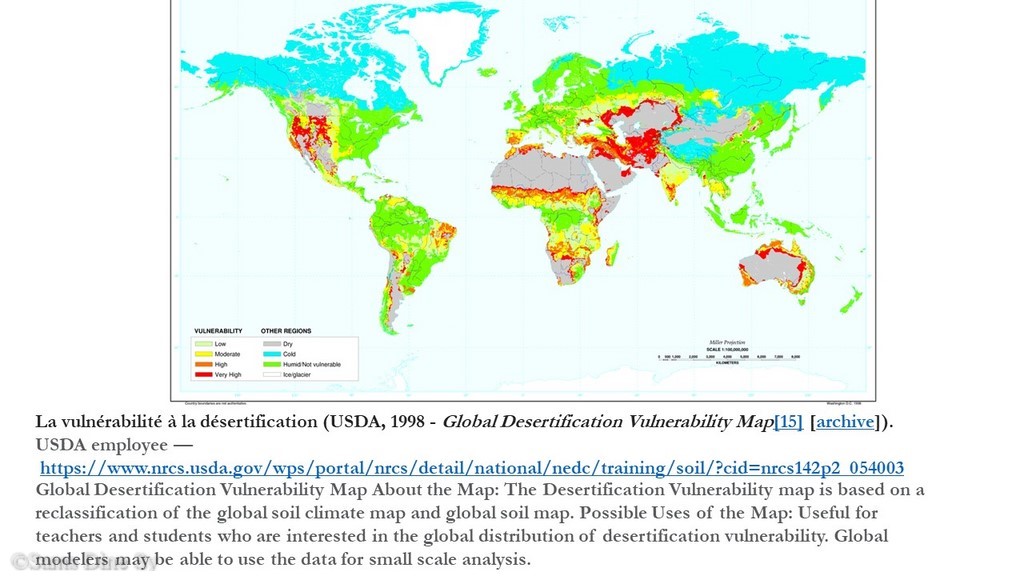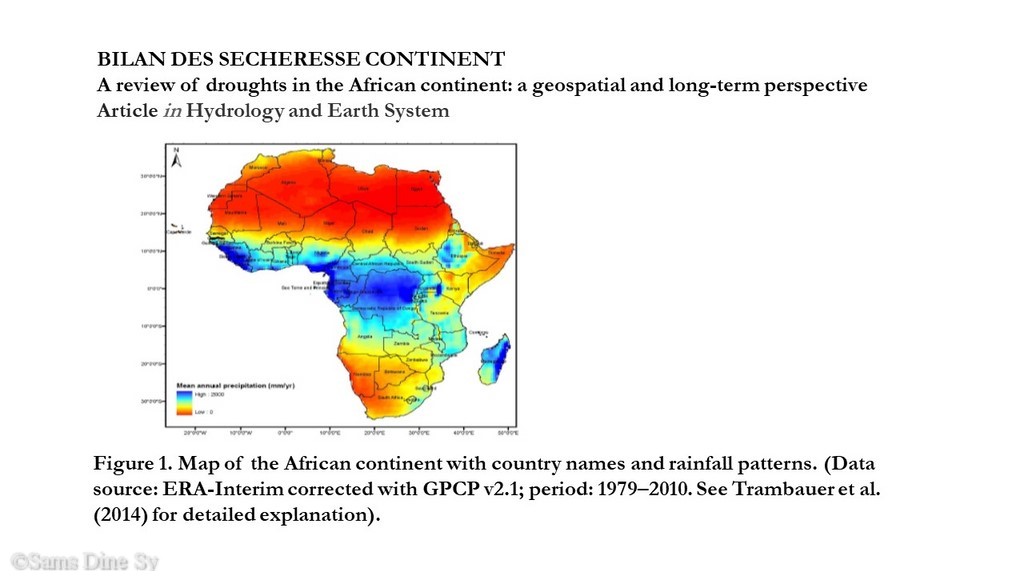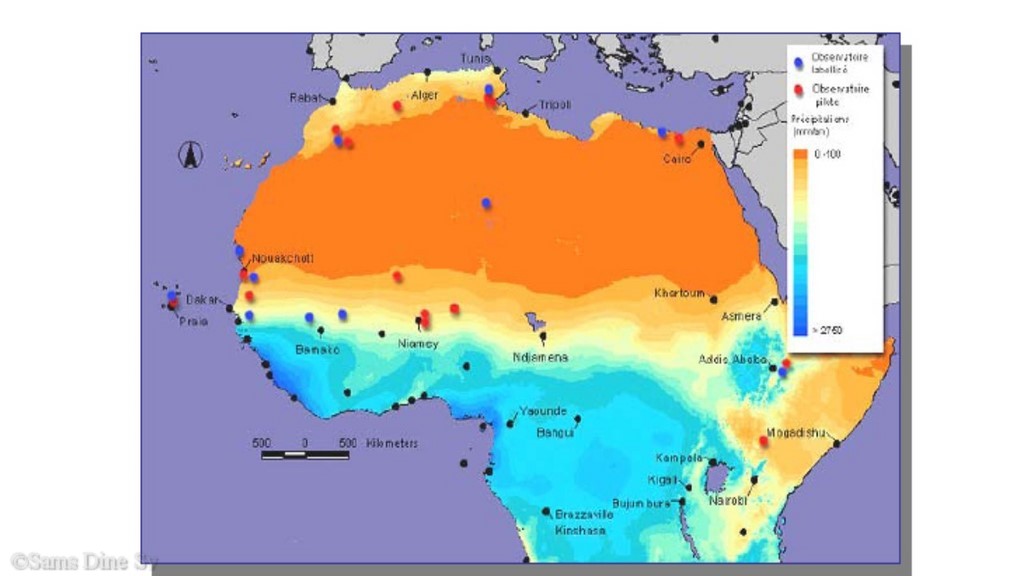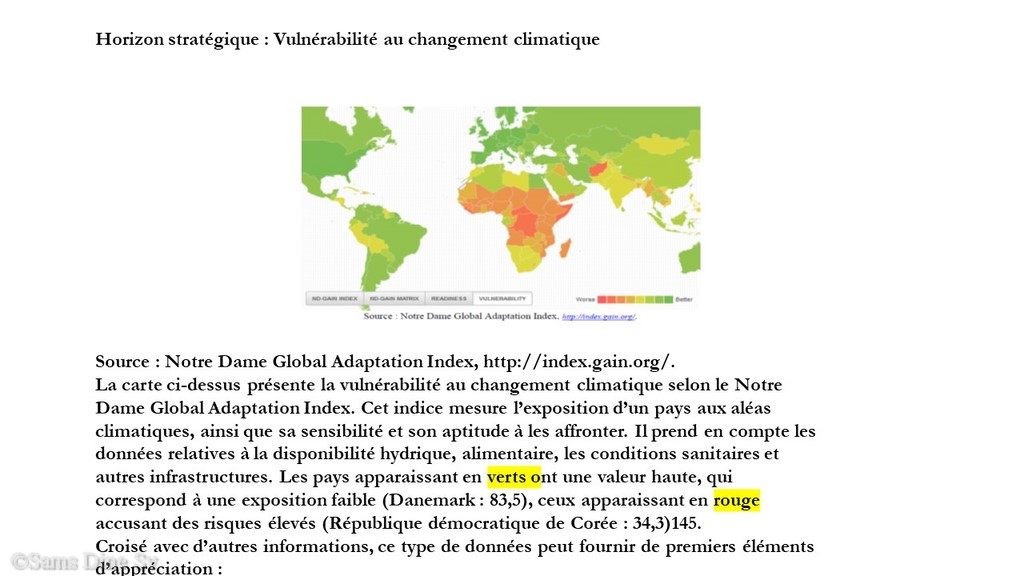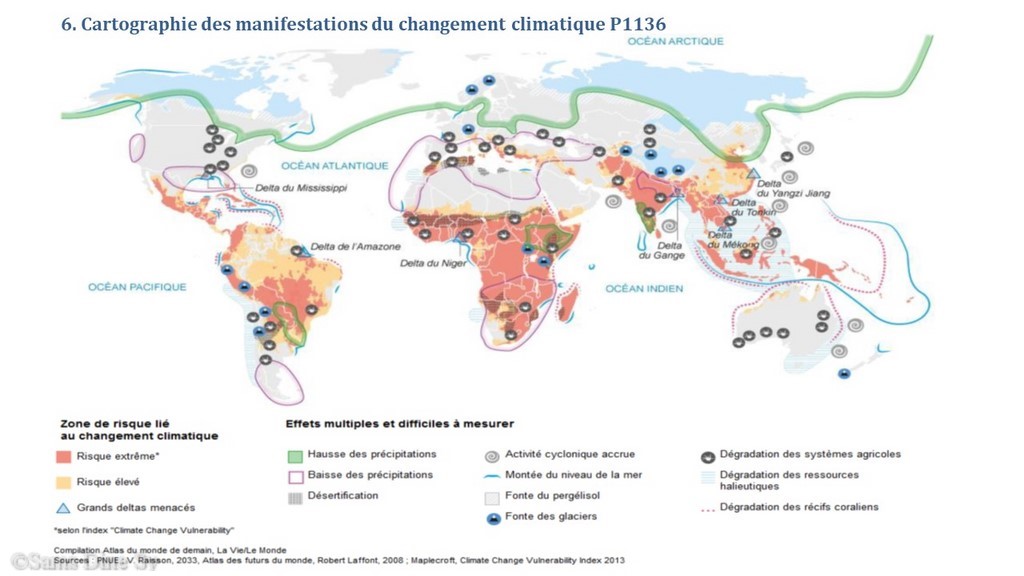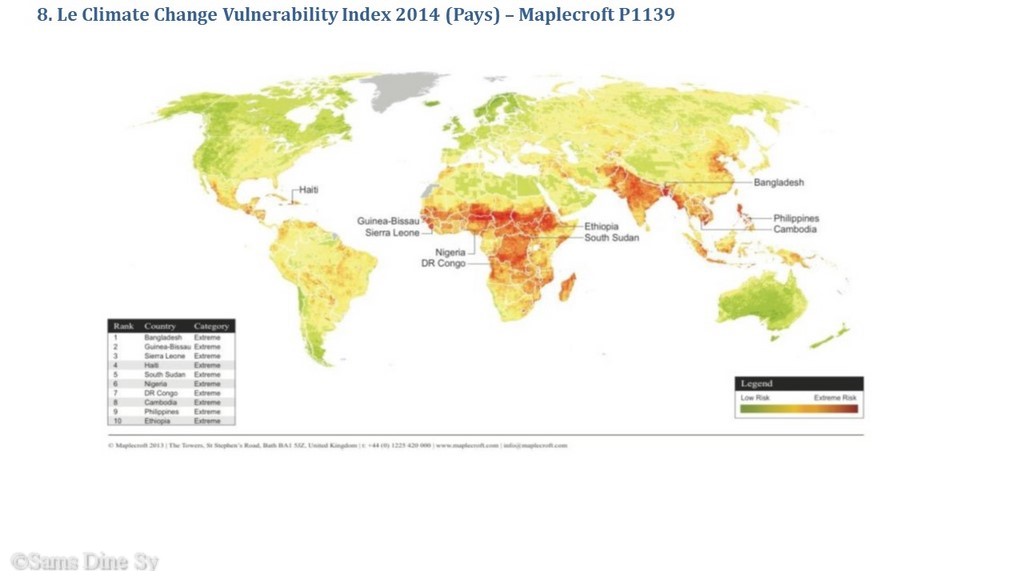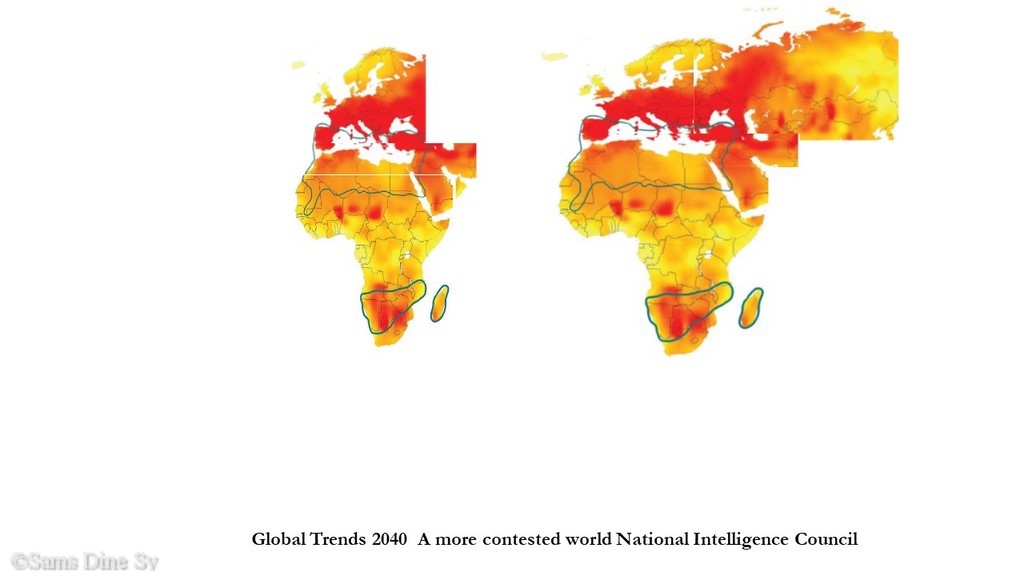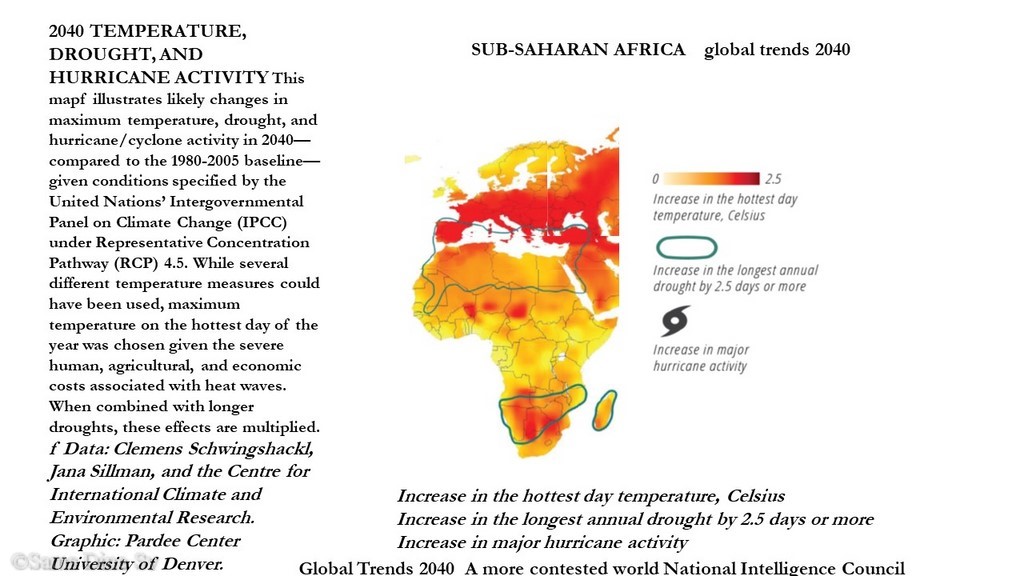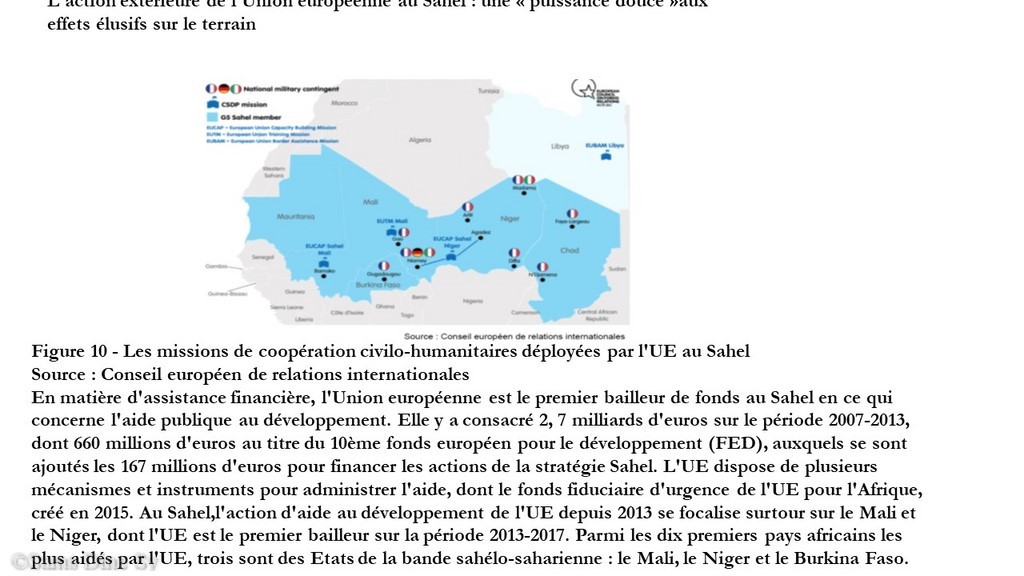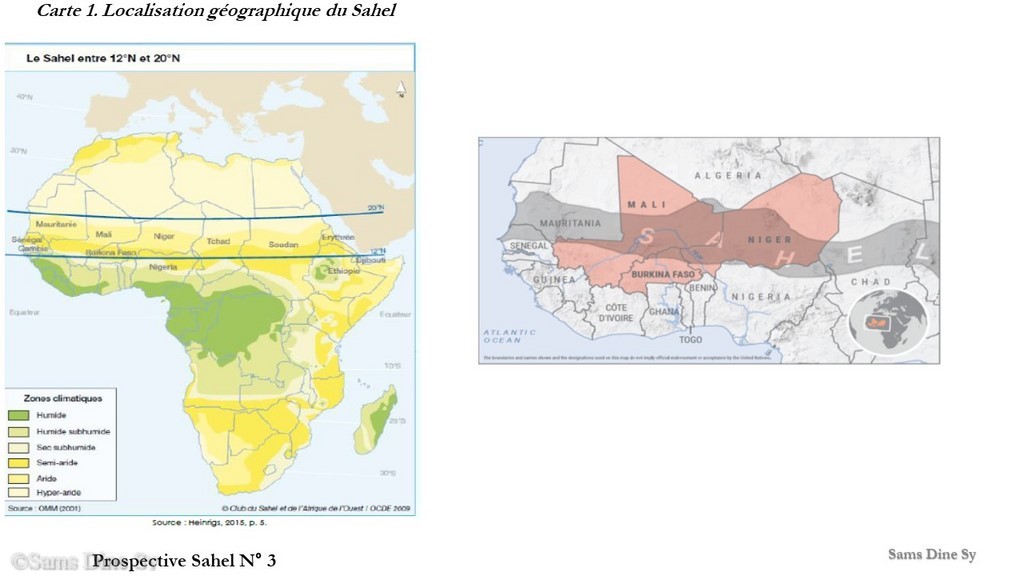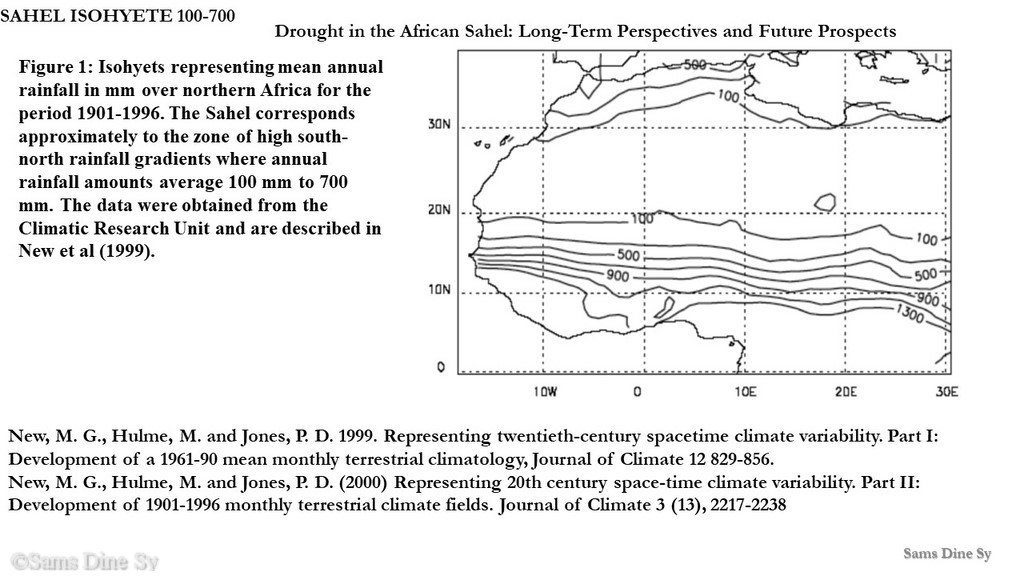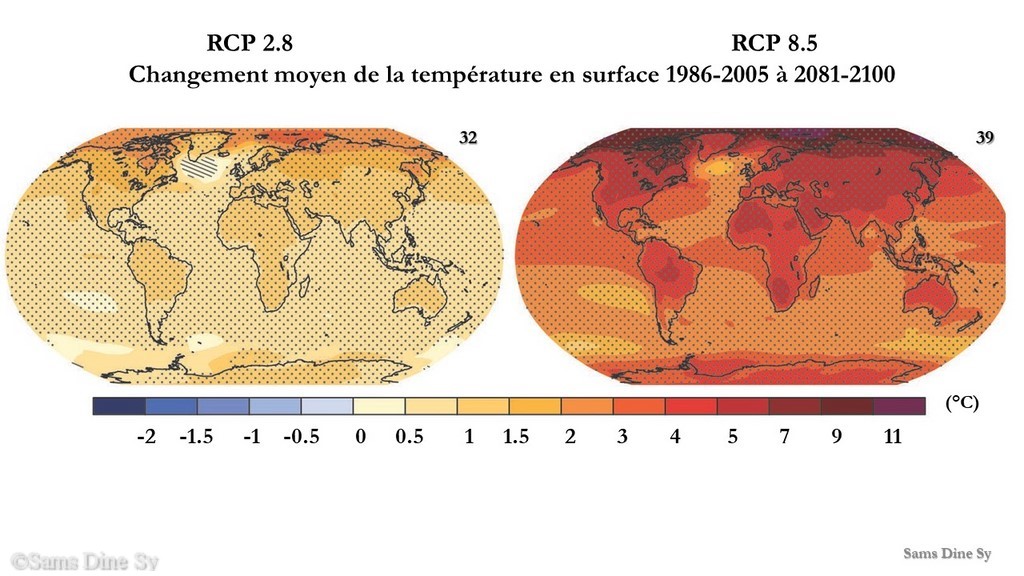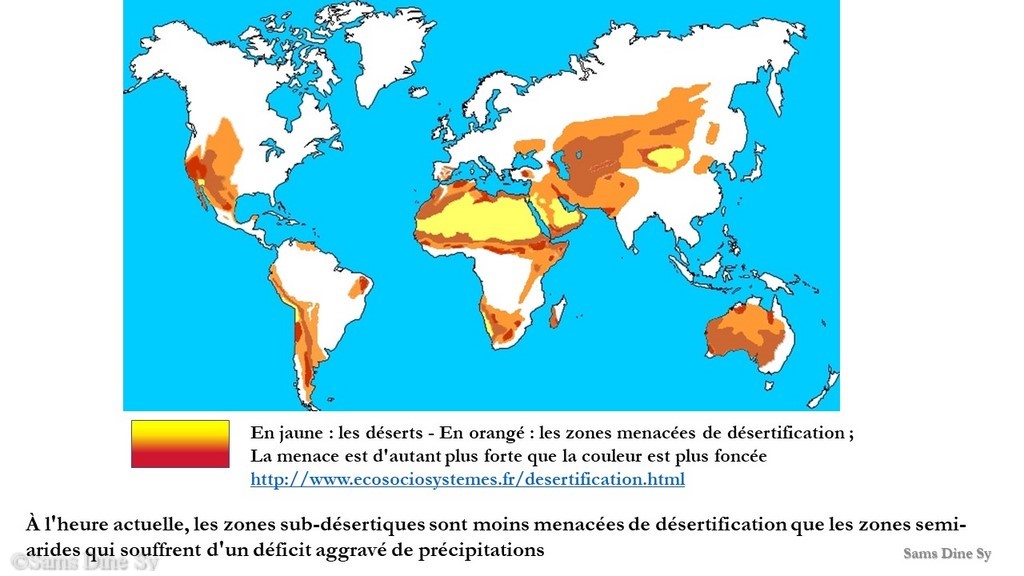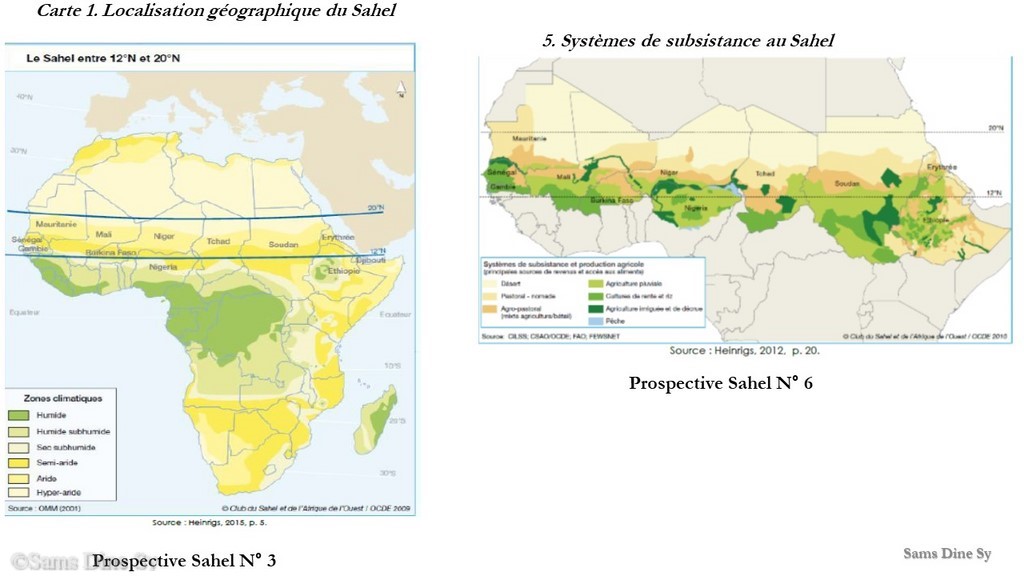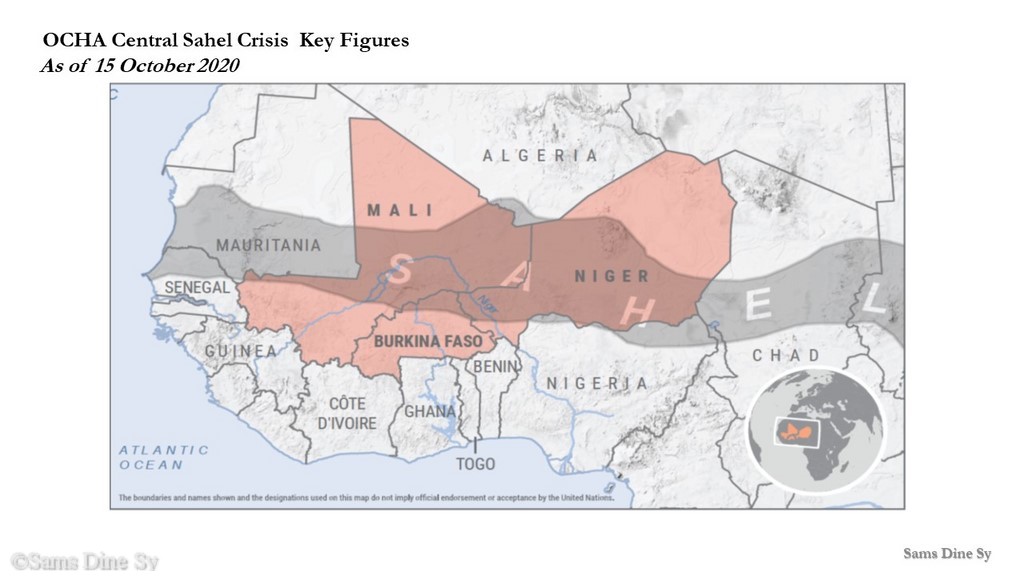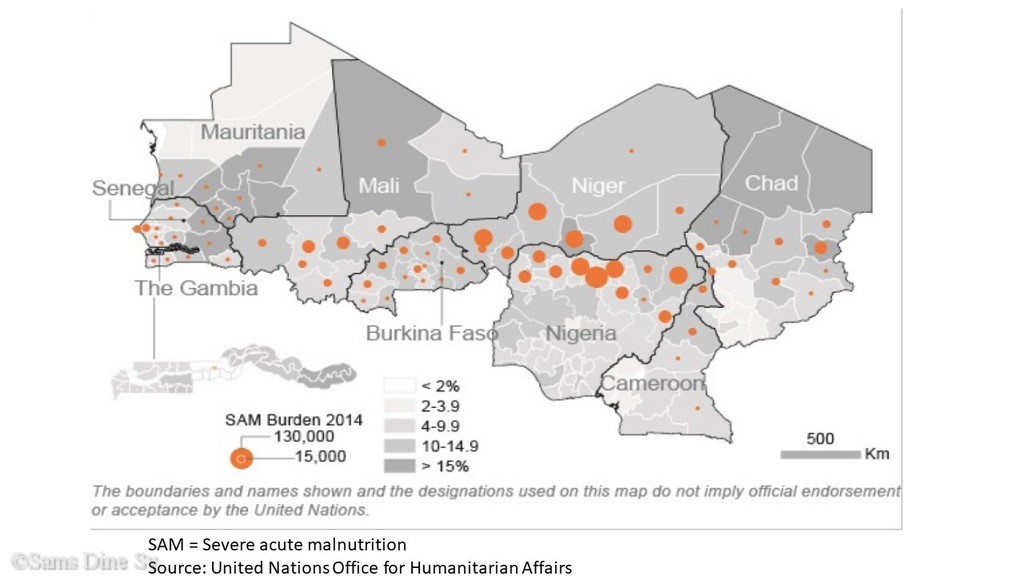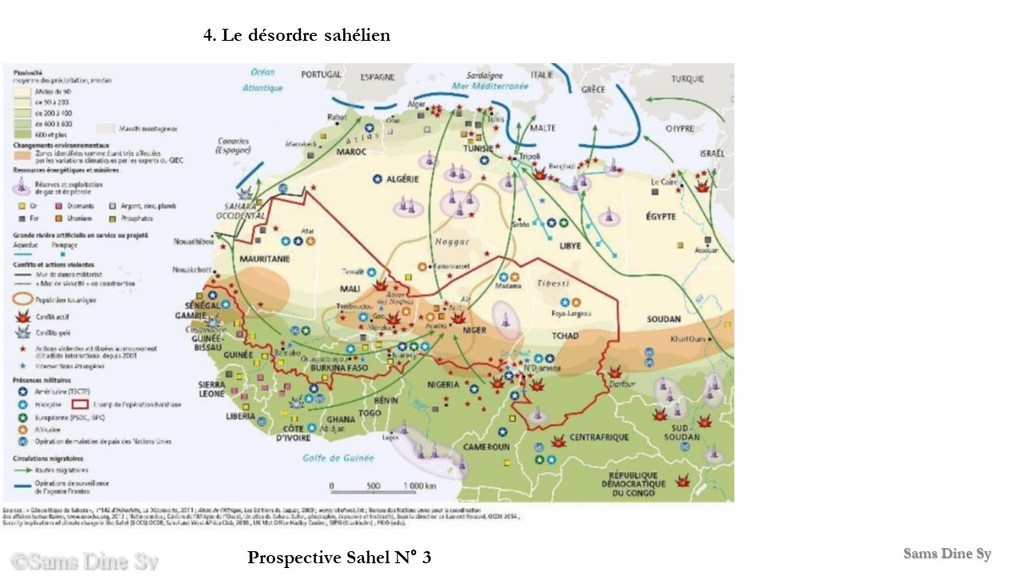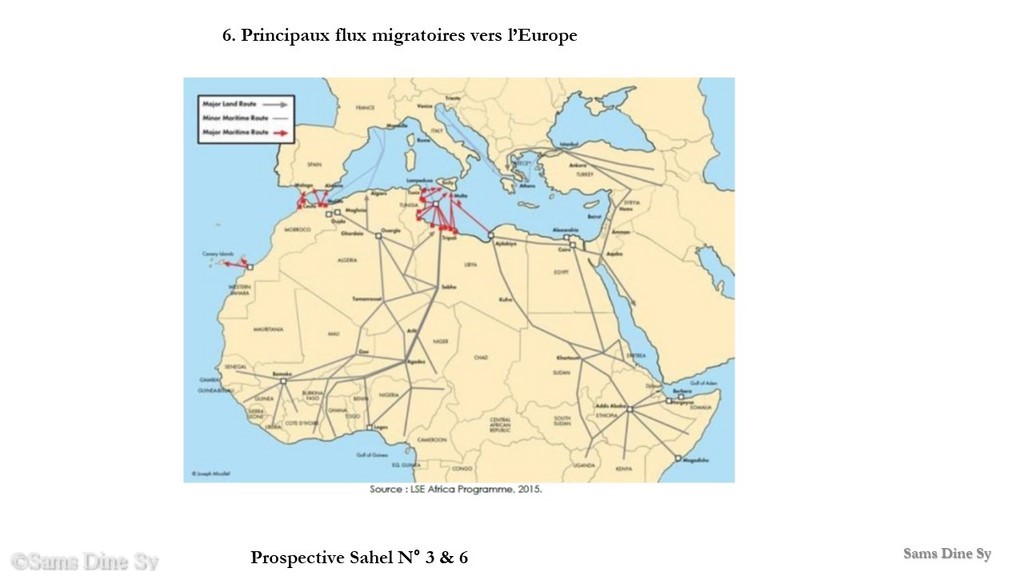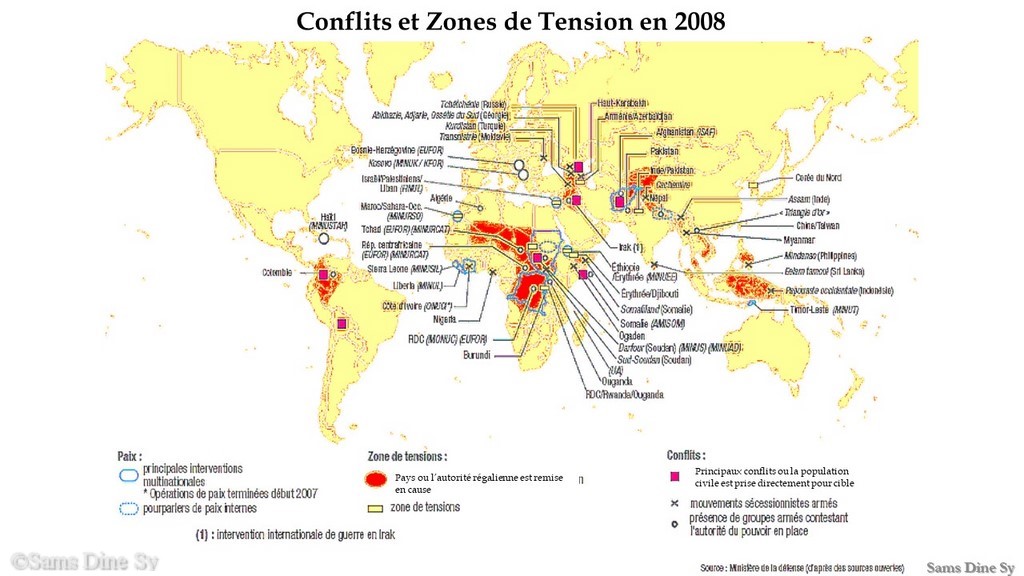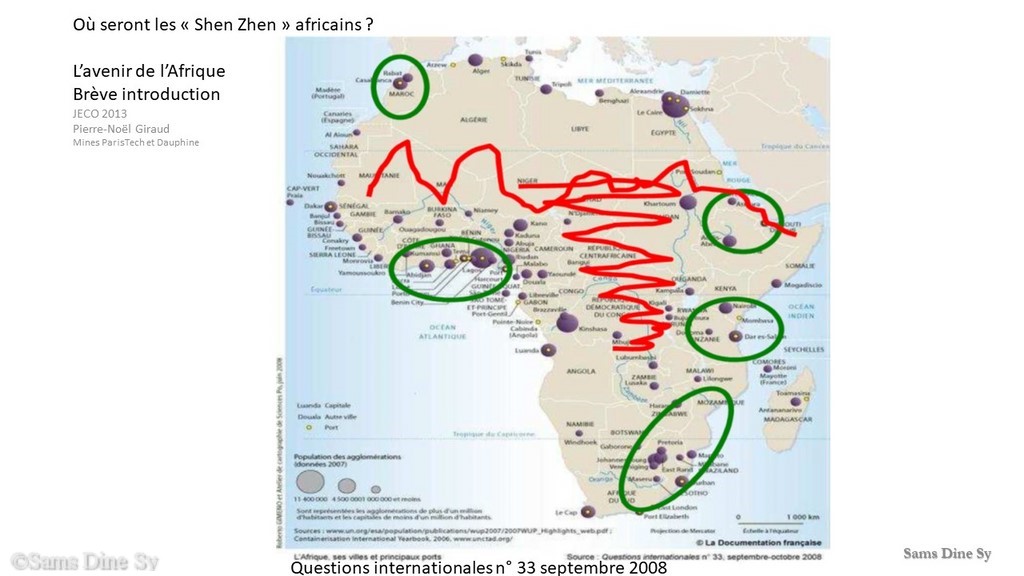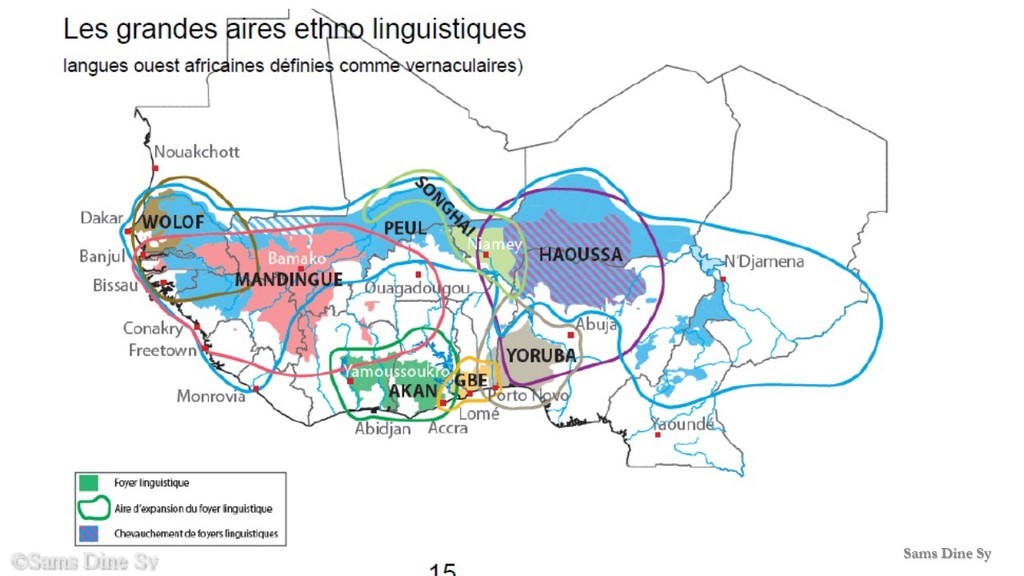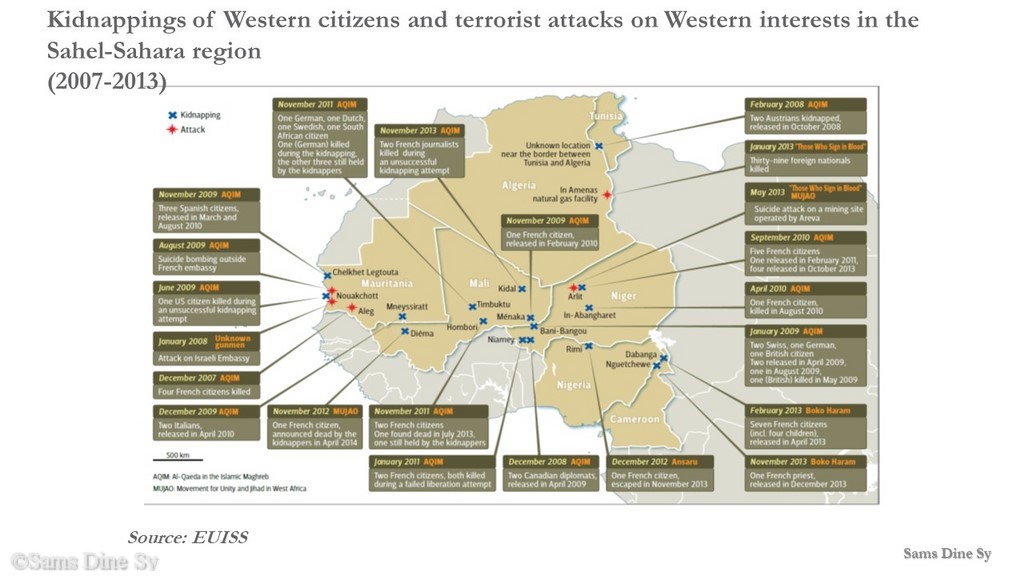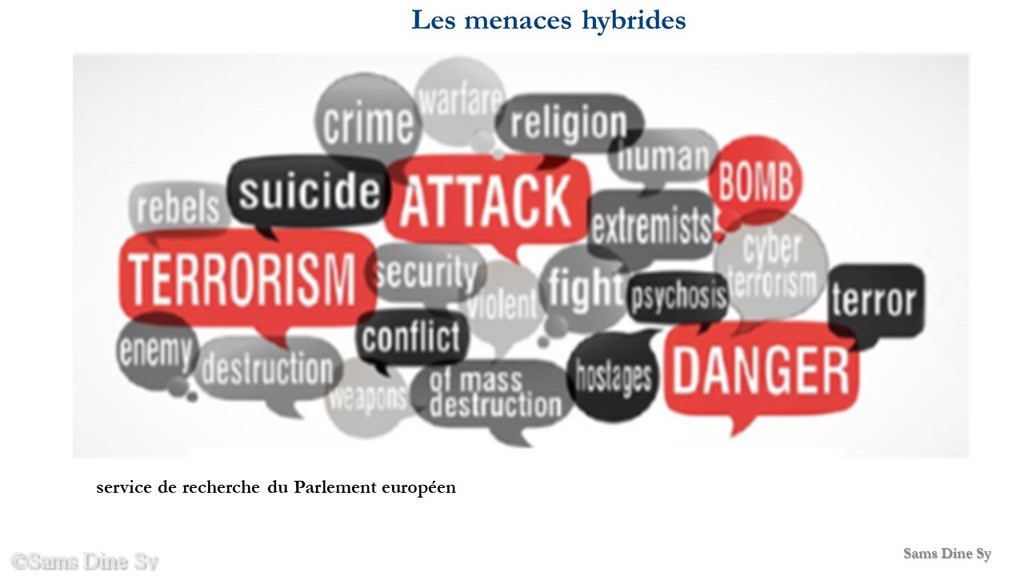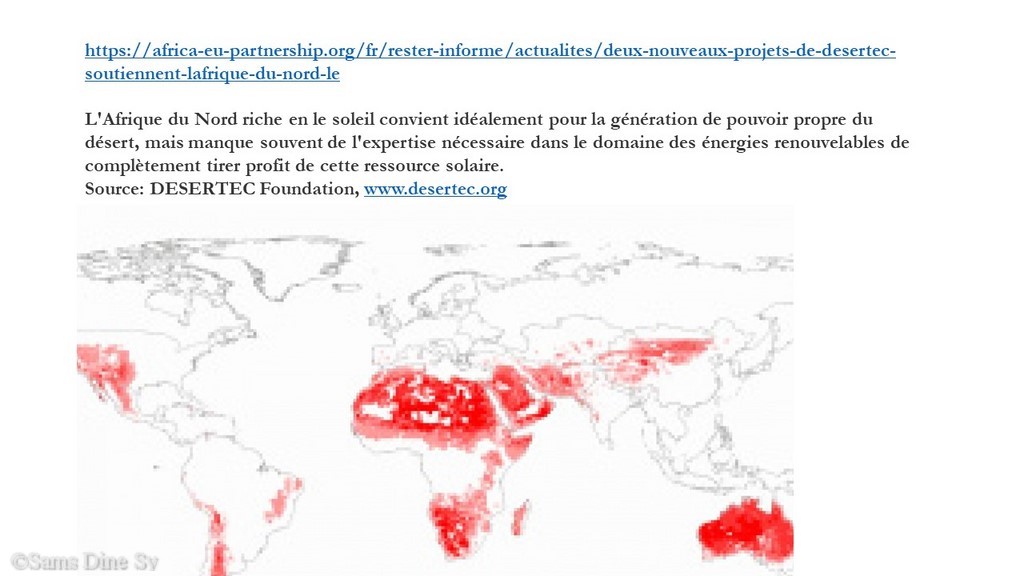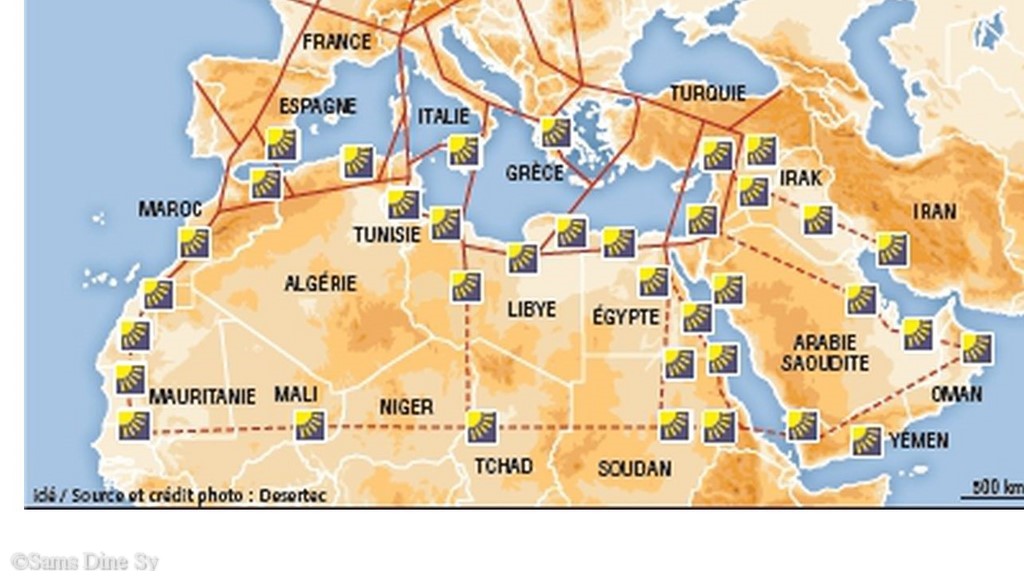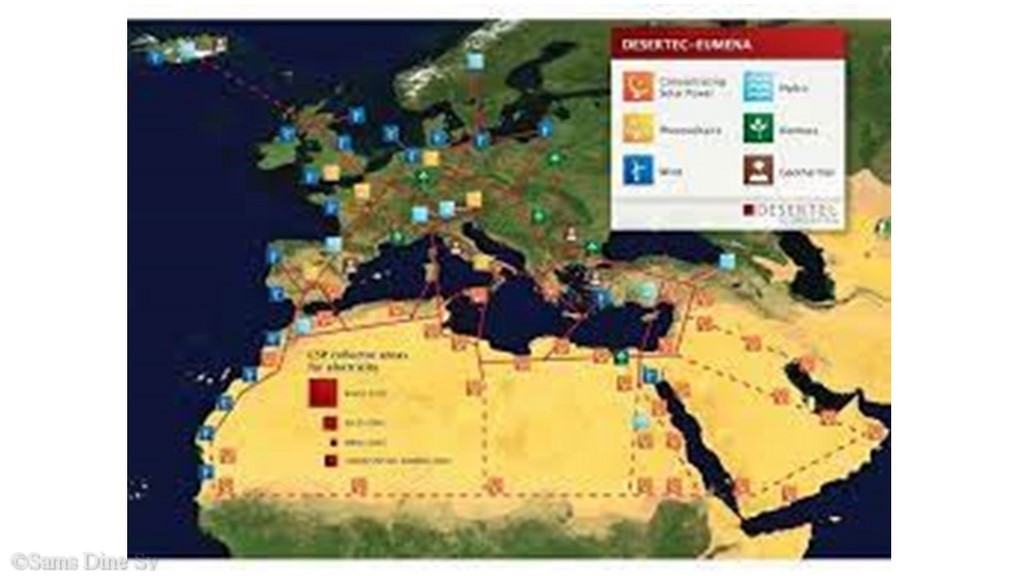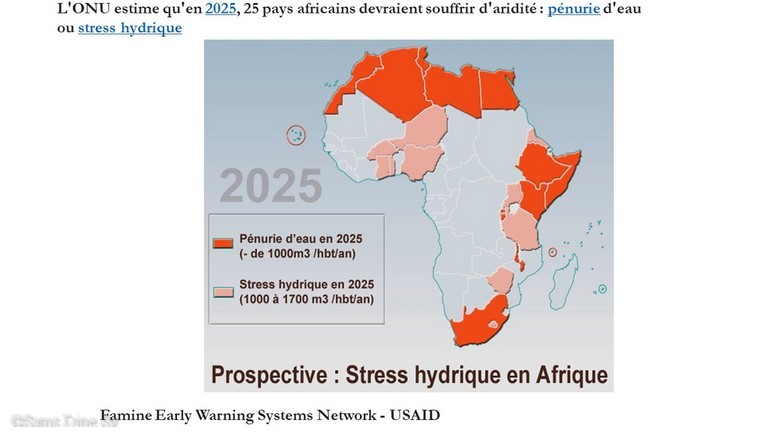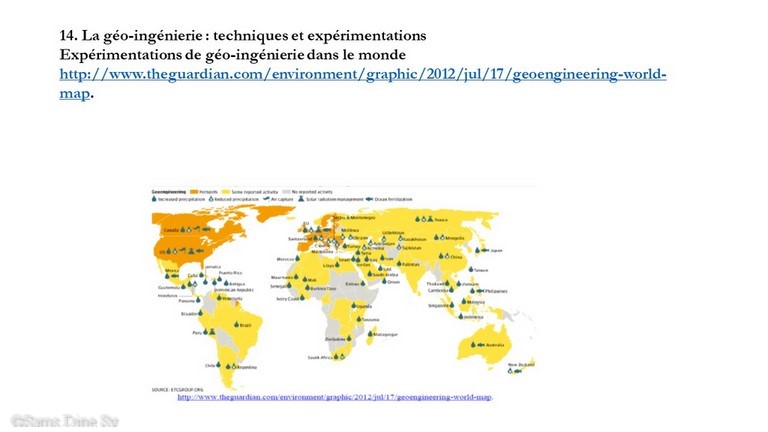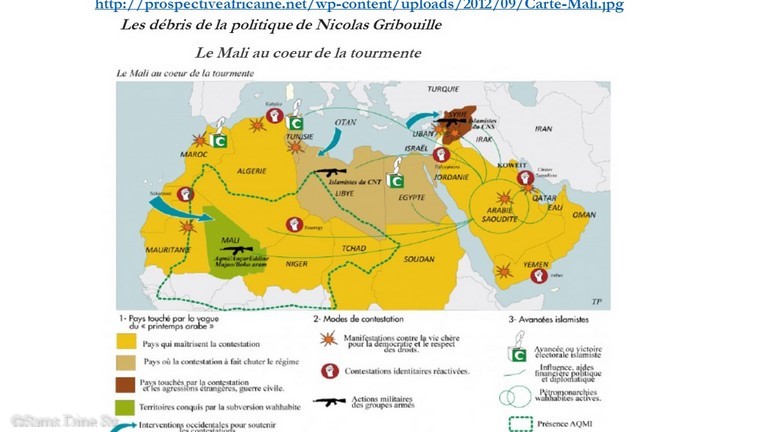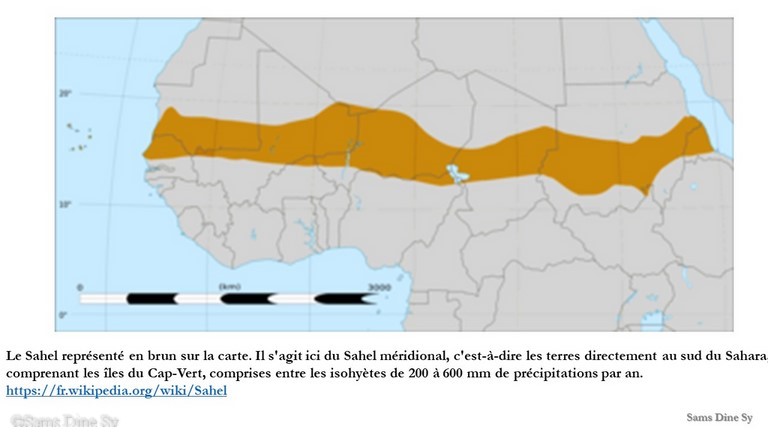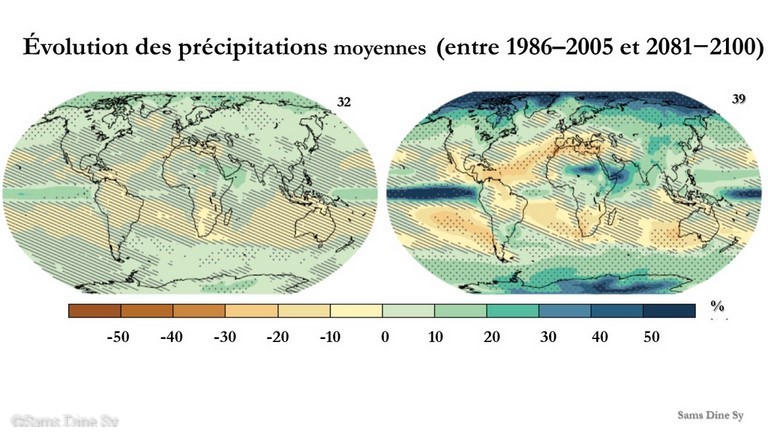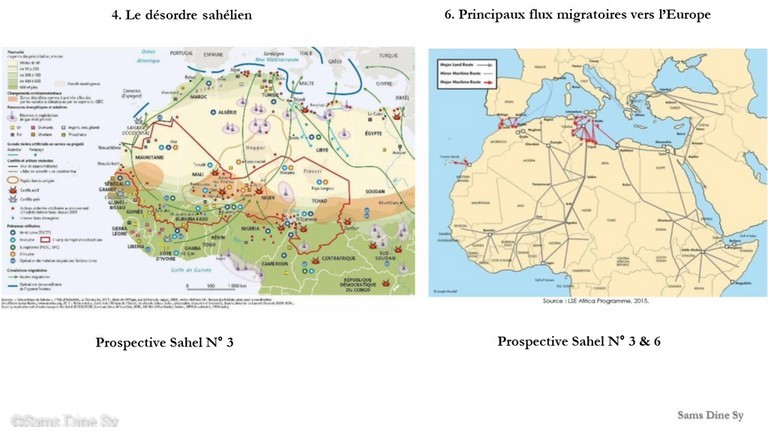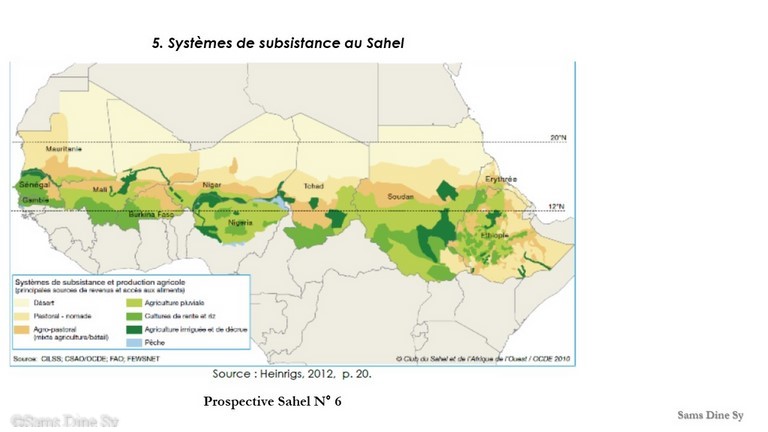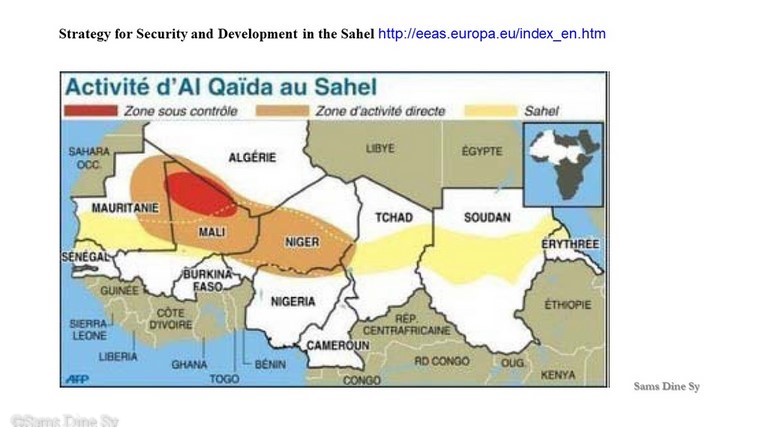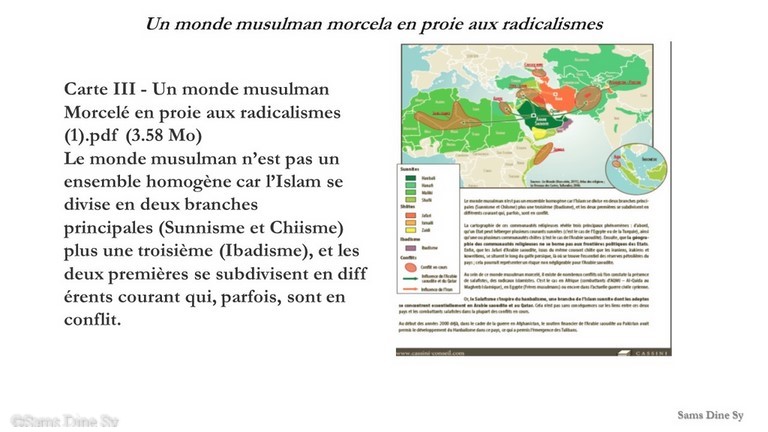DECONSTRUCTING "THE TRAGEDY OF THE COMMONS IN THE SAHEL"
DECONSTRUCTING "THE TRAGEDY OF THE COMMONS IN THE SAHEL"
- deconstructing "the Tragedy of the Commons in the Sahel" headlines Statements & key message
- At the origin of the "tragedy of the commons in the Sahel": two steps and a crisis
- A more complex geoclimatic dynamics not reducible to three parameters
- The Sahel at the rescue a of the MIT
- Ammunition in the clash of models
- From the tragedy of the commons to the device of the counter-value
- The Sahel and the world: what landscape after the storm
- Infography
deconstructing "the Tragedy of the Commons in the Sahel" headlines Statements & key message
headlines Statements & key message
Why to deconstruct the "Tragedy of the Commons in the Sahel" ?
(A non-technical introductory summary)
Sams Dine Sy, 07/06/2021
Rather than alternating brutal attacks by denial of sovereignty (phlashing) and empathetic declarations reducing populations to the status of indigenous peoples to be protected and - if only to be audible without maintaining the confusion - three suggestions by way of right of reply.
To extricate oneself from the demo-resource theory that is more than ever mobilized in the name of the "Tragedy of the Commons" to the point of being among the first applications of the system dynamics methodology developed in the 1970s by J. Forrester and his team at the Massachusetts Institute of Technology Center for Policy Alternatives (MIT/CPA).
To step back from the clash of models that goes back half a century; the Sahel flies to the rescue of the MIT that runs out of ammunition and wraps it in an "Electronic Oracle" to defend Limits to Growth (World III; 1972) and World Dynamics (World I; 1973); and is about to become the target in a scenario - among others - of greening and food production for humanity, (Globaïa & NOAA National Climatic Data Center; British journal New Scientist).
To break free from the Marshall Aid countervalue arrangement, under which the Allies ceded the resources of their former colonies in exchange. The challenge is daunting: all past attempts have failed, as the process and cyclical characteristics of this famous Multiple Stream Framework (J.W. Kingdon; 1984) remain to be clarified. The Marshall Plan always traps the beneficiary allies who try to escape it by appropriating the Electronic Oracle through metaphors, chameleon concepts and other rustic process; the same trap locks in the status of actants or substitutes all those who claim one without having resource-rich ex-colonies.
This is a whole program to be appropriated in order to invite oneself serenely to discuss Africa under the palaver tree. These suggestions are obviously addressed to all those who have links with this space in Africa and in the rest of the world.
The situation in the Sahel has reached a paroxysmal moment since two invasive species have been living side by side, driving an adaptive dynamic for multi-predator-prey systems, under the watchful eye of both the states and institutions it crosses and the medium and large powers that have strategic interests there. The frontier between these species is becoming fluid, while the effort to specify and conceptualize them is becoming more and more laborious and the demo-research attacks are intensifying.
A few lines of inquiry from an e-manuscript summarized in this first section allow us to deepen or broaden a subject that is still confidential, not to say obscured.
The Sahel - a space stretching from the Atlantic to the Red Sea - was the scene of the greatest epic that slavery, the slave trade and colonization link in a unique trilogy in the history of humanity. The last episode that completes the construction in a tetralogy - halfway between Hellenic tradition and Nordic mythology - is written in the 70's when the scientist-prophets, always afraid of the tyranny of numbers that can arise from it, feed on the "Tragedy of the Commons in the Sahel, (TCS)", an Electronic Oracle that came out of Dynamo's mouth and carries its voice to the horizon of the XXIst century because of MIT/CPA.
The exercise uses a half-century of drought to describe a situation in which "people were starving, livestock were starving, and the Sahel was becoming desertified." According to the Oracle, the Sahel is headed from the 1970s onwards towards a half-century of disasters aggravated by the traditional approach of foreign aid that caused the problem of overpopulation and overexploitation of resources; it then evokes a half-century trajectory in which, once all external intervention is withdrawn, disease, drought, famine and war stabilize the system, accelerate the ecological disaster and the brutal reduction of the population, even its extinction. Following this disintegration, selective reconstruction takes place throughout the 21st century thanks to massive and benevolent external support in the name of ethical and practical considerations.
The decision to carry out the exercise dates back to June 1973. During a meeting convened by the United Nations on the situation of the Sahel, the Federal State proposed to provide the global methodology for the resolution of this complex problem and entrusted MIT with the task of providing the answer before September 1974. However, the short time frame and the lack of coordination in the steering of the study marred the rigor of the approach, which was more influenced by the controversies triggered by the almost simultaneous publication of "Limits t and “World Dynamics “. These two exercises triggered a worldwide emotion and the clash of models. Whether by chance or by calculation, the TCS exercise is quickly diverted from its initial purpose to support the results of simulations leading to the collapse of the world economy under the cumulative effect of limits on resources, overpopulation and pollution.
The violence of the clash of models requires new ammunition. So TCS flies to the rescue of MIT, which takes it on a journey through "Interfutures" to land at the OECD in the project of the same name charged with recycling everything into North-South Dialogue. During this time, the project team developed a new narrative system that was revised five times between 1976 and 1989 because it was likely to "offend certain Sahelian sensitivities" and invited the Sahel into a Club (1976) with endless foresight studies. The latter followed one another with some twenty exercises in less than half a century, breaking the world record. Another record is broken when the Sahel is invaded by so many chameleon-like concepts: Sahelistan, Africanistan, Libyastan, to which only Malistan is missing, if not already a city in Ghazni in Afghanistan. Paradoxically, all these exercises and works that have been accumulating since then never refer, even if only bibliographically, to the MIT electronic Oracle.
What remains of this Sahelian moment after half a century? At most, a catalog of models and studies based on hypotheses that have been invalidated by multi-secular mega-trends. The geoclimatic dynamics of this space cannot be captured by the first electronic model that comes along and its complexity cannot be reduced to the three parameters of population, resources, and grazing. The Sahel is always as human as it is alive and, like others, as exposed to drying out as it is to be greening. It could not be otherwise for a space with such blurred contours that is nonetheless emblematic of positive integration due to the absence of natural barriers to the movement of people.
Without the transformation of a pasture into a strategic landscape, the fate of the Sahelian populations and their way of life would not have attracted the interest of so many scientist-prophets, particularly outside the United States. Instead, the Oracle has become so addictive that it has served as unconscious material for methods that lead to the construction of narratives and the formulation of straitjackets that lock the Sahel into a paranoid delusion of ideological promises. The scientist-prophets blithely straddle this space to extend it to West Africa, the southern Mediterranean or the continent. Not content with making it the epicenter of all crises, they now identify it with "hybrid threats", another chameleon concept of total vacuity. The height is reached when the rustic processes from Separatic (D. Tondeur e.a, 1987) are mobilized to fracture populations and communities again and again. All these concepts and procedures are indicative of the level of mediocrity and corruption, two scourges that make it difficult to put the tragedy of the commons into its historical context, to identify the multiple dimensions of Marshall Aid and counter-value, and thus to avoid all the uncontrolled slippages that lead to the current situation.
To extricate oneself from the demo-resource theory that is more than ever mobilized in the name of the "Tragedy of the Commons" to the point of being among the first applications of the system dynamics methodology developed in the 1970s by J. Forrester and his team at the Massachusetts Institute of Technology Center for Policy Alternatives (MIT/CPA).
To step back from the clash of models that goes back half a century; the Sahel flies to the rescue of the MIT that runs out of ammunition and wraps it in an "Electronic Oracle" to defend Limits to Growth (World III; 1972) and World Dynamics (World I; 1973); and is about to become the target in a scenario - among others - of greening and food production for humanity, (Globaïa & NOAA National Climatic Data Center; British journal New Scientist).
To break free from the Marshall Aid countervalue arrangement, under which the Allies ceded the resources of their former colonies in exchange. The challenge is daunting: all past attempts have failed, as the process and cyclical characteristics of this famous Multiple Stream Framework (J.W. Kingdon; 1984) remain to be clarified. The Marshall Plan always traps the beneficiary allies who try to escape it by appropriating the Electronic Oracle through metaphors, chameleon concepts and other rustic process; the same trap locks in the status of actants or substitutes all those who claim one without having resource-rich ex-colonies.
This is a whole program to be appropriated in order to invite oneself serenely to discuss Africa under the palaver tree. These suggestions are obviously addressed to all those who have links with this space in Africa and in the rest of the world.
The situation in the Sahel has reached a paroxysmal moment since two invasive species have been living side by side, driving an adaptive dynamic for multi-predator-prey systems, under the watchful eye of both the states and institutions it crosses and the medium and large powers that have strategic interests there. The frontier between these species is becoming fluid, while the effort to specify and conceptualize them is becoming more and more laborious and the demo-research attacks are intensifying.
A few lines of inquiry from an e-manuscript summarized in this first section allow us to deepen or broaden a subject that is still confidential, not to say obscured.
The Sahel - a space stretching from the Atlantic to the Red Sea - was the scene of the greatest epic that slavery, the slave trade and colonization link in a unique trilogy in the history of humanity. The last episode that completes the construction in a tetralogy - halfway between Hellenic tradition and Nordic mythology - is written in the 70's when the scientist-prophets, always afraid of the tyranny of numbers that can arise from it, feed on the "Tragedy of the Commons in the Sahel, (TCS)", an Electronic Oracle that came out of Dynamo's mouth and carries its voice to the horizon of the XXIst century because of MIT/CPA.
The exercise uses a half-century of drought to describe a situation in which "people were starving, livestock were starving, and the Sahel was becoming desertified." According to the Oracle, the Sahel is headed from the 1970s onwards towards a half-century of disasters aggravated by the traditional approach of foreign aid that caused the problem of overpopulation and overexploitation of resources; it then evokes a half-century trajectory in which, once all external intervention is withdrawn, disease, drought, famine and war stabilize the system, accelerate the ecological disaster and the brutal reduction of the population, even its extinction. Following this disintegration, selective reconstruction takes place throughout the 21st century thanks to massive and benevolent external support in the name of ethical and practical considerations.
The decision to carry out the exercise dates back to June 1973. During a meeting convened by the United Nations on the situation of the Sahel, the Federal State proposed to provide the global methodology for the resolution of this complex problem and entrusted MIT with the task of providing the answer before September 1974. However, the short time frame and the lack of coordination in the steering of the study marred the rigor of the approach, which was more influenced by the controversies triggered by the almost simultaneous publication of "Limits t and “World Dynamics “. These two exercises triggered a worldwide emotion and the clash of models. Whether by chance or by calculation, the TCS exercise is quickly diverted from its initial purpose to support the results of simulations leading to the collapse of the world economy under the cumulative effect of limits on resources, overpopulation and pollution.
The violence of the clash of models requires new ammunition. So TCS flies to the rescue of MIT, which takes it on a journey through "Interfutures" to land at the OECD in the project of the same name charged with recycling everything into North-South Dialogue. During this time, the project team developed a new narrative system that was revised five times between 1976 and 1989 because it was likely to "offend certain Sahelian sensitivities" and invited the Sahel into a Club (1976) with endless foresight studies. The latter followed one another with some twenty exercises in less than half a century, breaking the world record. Another record is broken when the Sahel is invaded by so many chameleon-like concepts: Sahelistan, Africanistan, Libyastan, to which only Malistan is missing, if not already a city in Ghazni in Afghanistan. Paradoxically, all these exercises and works that have been accumulating since then never refer, even if only bibliographically, to the MIT electronic Oracle.
What remains of this Sahelian moment after half a century? At most, a catalog of models and studies based on hypotheses that have been invalidated by multi-secular mega-trends. The geoclimatic dynamics of this space cannot be captured by the first electronic model that comes along and its complexity cannot be reduced to the three parameters of population, resources, and grazing. The Sahel is always as human as it is alive and, like others, as exposed to drying out as it is to be greening. It could not be otherwise for a space with such blurred contours that is nonetheless emblematic of positive integration due to the absence of natural barriers to the movement of people.
Without the transformation of a pasture into a strategic landscape, the fate of the Sahelian populations and their way of life would not have attracted the interest of so many scientist-prophets, particularly outside the United States. Instead, the Oracle has become so addictive that it has served as unconscious material for methods that lead to the construction of narratives and the formulation of straitjackets that lock the Sahel into a paranoid delusion of ideological promises. The scientist-prophets blithely straddle this space to extend it to West Africa, the southern Mediterranean or the continent. Not content with making it the epicenter of all crises, they now identify it with "hybrid threats", another chameleon concept of total vacuity. The height is reached when the rustic processes from Separatic (D. Tondeur e.a, 1987) are mobilized to fracture populations and communities again and again. All these concepts and procedures are indicative of the level of mediocrity and corruption, two scourges that make it difficult to put the tragedy of the commons into its historical context, to identify the multiple dimensions of Marshall Aid and counter-value, and thus to avoid all the uncontrolled slippages that lead to the current situation.
At the origin of the "tragedy of the commons in the Sahel": two steps and a crisis
The TCS (1975) is a multidisciplinary exercise in modeling social systems as parameterized by J. W. Forrester and his team within MIT/CPA. The approach is strictly in line with the Limits of Growth (World III; 1972) and World Dynamics (World I; 1973). This is the first application of the methodology of system dynamics (the systemic) to a case study of the "Tragedy of the Commons", a neoliberal thought theorized by G. Hardin (1968), annexed to the "New Resource Economics" and elevated to the title of emblem in the struggle for exclusive ownership as the only brake on the overexploitation of resources and the world's overpopulation.
Two parallel approaches and a crisis are at the origin of the Oracle. On the one hand, MIT scientists who claim to hold the truth as well as the power to tell it because of the power of simulation methods from the dynamics of systems; on the other the "demo-resourcist" prophets who revolve around the Institute, followers of the adaptive dynamics for predator-prey systems, engaged in the name of environmental protection in the fight for exclusive ownership as the only brake on the overexploitation of resources and global overpopulation. The drought in the Sahel countries, the clash of models and the oil shocks provide these scientists-prophets with the opportunity to gradually bring these two approaches closer together around a reading carried by this unique voice.
With the TCS, MIT is taking up the issue of famine in the Sahel to deepen the reflection on environmental degradation, elevate the study of desertification to the rank of a major discipline and internationalize it. The study builds on the case of environmental services in the Sahel anticipating current debates within scientific ecology on "the provision of ecosystem services and the protection of biodiversity". It brings together two visions explored within MIT since 1970 around the CEP (Study of Critical Environmental Problems): the replacement of environmental services when degradation is considered irreversible (humanistic or socio-economic approach to desertification) on the one hand, and their conservation by the protection of biodiversity (biologistic, evolutionary or adaptive dynamics approach for prey/predatory systems) on the other hand. By making the theory "demoressourcist" quantitative using the Dynamo cybernetic model, MIT allows the TCS to occupy a prominent place in the imposing comparative study by Meadows D & Robinson JM (1985) "The Electronic Oracle: Computer Models and Social Decisions Tools" reproducing all the exercises carried out by the CPA.
In accordance with the intellectual framework of reference, the TCS takes common grazing - in this case pastoralism in times of drought and famine - to illustrate the principle of incompatibility between common ownership and sustainability of resources. Pastoralism is the first example of an inescapable tragedy in the event of overexploitation of an open access resource with unlimited demand. By focusing on the Sahel, the case study seeks to justify the privatization of resources and ecosystems. Sahel states, reduced to mere supports for bilateral aid, are part of the problem. The abolition of the latter therefore leads to their bankruptcy, thus paving the way for half a century of decimation of populations and biodiversity.
This thought continues to shape memories in the same way as the Great War to the point of being elevated to the rank of myth (F. Locher, 2016). But it is also the subject of many questions relating both to the choice of words and to the fund. The "Tragedy" is nuanced and interpreted as a simple metaphor. The definition of "Commons" is clarified and differentiated from that of "Open Access". Alternatives are recommended in particular around the notion of "Governance of the Commons". As for the Sahel, although it is reduced to its southern part, there is nothing to indicate that the northern part is not in the line of fire, if only because of the oil resources that make it possible to encompass the southern and eastern Mediterranean, including the Persian Gulf. This hypothesis cannot be ruled out in view of the damage caused by the Oracle in all these spaces, whether by manipulating the price of oil or by manipulating weapons.
As crises follow one another and new actors erupt, "the tragedy of the commons" evolves, its lexical field is enriched with new narrative systems and other discursive models to build a new meaning from the subject (Sahel), the object (Commons) or the discourse (Tragedy). The perimeter of the Sahel varies according to the periods and the magnitude of the threats to the point of encompassing Africa and beyond the South or being reduced to the Zone of the 3 Borders. Depending on the resources at stake and their material or immaterial characteristics, the Commons navigate between grazing, energy, counter-value, biodiversity... Tragedy, on the other hand, has a metaphorical meaning to better reconcile the scientification of politics and the politicization of science through dialogue. From this tipping point the "Tragedy of the Commons in the Sahel” becomes a coded language sured with a nebula of chameleon concepts and rustic processes that are embedded in collective memories and circulate in complete freedom guiding the production of stories and the reception of actors' messages through a perfectly honed game/goal/target palette.
Two parallel approaches and a crisis are at the origin of the Oracle. On the one hand, MIT scientists who claim to hold the truth as well as the power to tell it because of the power of simulation methods from the dynamics of systems; on the other the "demo-resourcist" prophets who revolve around the Institute, followers of the adaptive dynamics for predator-prey systems, engaged in the name of environmental protection in the fight for exclusive ownership as the only brake on the overexploitation of resources and global overpopulation. The drought in the Sahel countries, the clash of models and the oil shocks provide these scientists-prophets with the opportunity to gradually bring these two approaches closer together around a reading carried by this unique voice.
With the TCS, MIT is taking up the issue of famine in the Sahel to deepen the reflection on environmental degradation, elevate the study of desertification to the rank of a major discipline and internationalize it. The study builds on the case of environmental services in the Sahel anticipating current debates within scientific ecology on "the provision of ecosystem services and the protection of biodiversity". It brings together two visions explored within MIT since 1970 around the CEP (Study of Critical Environmental Problems): the replacement of environmental services when degradation is considered irreversible (humanistic or socio-economic approach to desertification) on the one hand, and their conservation by the protection of biodiversity (biologistic, evolutionary or adaptive dynamics approach for prey/predatory systems) on the other hand. By making the theory "demoressourcist" quantitative using the Dynamo cybernetic model, MIT allows the TCS to occupy a prominent place in the imposing comparative study by Meadows D & Robinson JM (1985) "The Electronic Oracle: Computer Models and Social Decisions Tools" reproducing all the exercises carried out by the CPA.
In accordance with the intellectual framework of reference, the TCS takes common grazing - in this case pastoralism in times of drought and famine - to illustrate the principle of incompatibility between common ownership and sustainability of resources. Pastoralism is the first example of an inescapable tragedy in the event of overexploitation of an open access resource with unlimited demand. By focusing on the Sahel, the case study seeks to justify the privatization of resources and ecosystems. Sahel states, reduced to mere supports for bilateral aid, are part of the problem. The abolition of the latter therefore leads to their bankruptcy, thus paving the way for half a century of decimation of populations and biodiversity.
This thought continues to shape memories in the same way as the Great War to the point of being elevated to the rank of myth (F. Locher, 2016). But it is also the subject of many questions relating both to the choice of words and to the fund. The "Tragedy" is nuanced and interpreted as a simple metaphor. The definition of "Commons" is clarified and differentiated from that of "Open Access". Alternatives are recommended in particular around the notion of "Governance of the Commons". As for the Sahel, although it is reduced to its southern part, there is nothing to indicate that the northern part is not in the line of fire, if only because of the oil resources that make it possible to encompass the southern and eastern Mediterranean, including the Persian Gulf. This hypothesis cannot be ruled out in view of the damage caused by the Oracle in all these spaces, whether by manipulating the price of oil or by manipulating weapons.
As crises follow one another and new actors erupt, "the tragedy of the commons" evolves, its lexical field is enriched with new narrative systems and other discursive models to build a new meaning from the subject (Sahel), the object (Commons) or the discourse (Tragedy). The perimeter of the Sahel varies according to the periods and the magnitude of the threats to the point of encompassing Africa and beyond the South or being reduced to the Zone of the 3 Borders. Depending on the resources at stake and their material or immaterial characteristics, the Commons navigate between grazing, energy, counter-value, biodiversity... Tragedy, on the other hand, has a metaphorical meaning to better reconcile the scientification of politics and the politicization of science through dialogue. From this tipping point the "Tragedy of the Commons in the Sahel” becomes a coded language sured with a nebula of chameleon concepts and rustic processes that are embedded in collective memories and circulate in complete freedom guiding the production of stories and the reception of actors' messages through a perfectly honed game/goal/target palette.
A more complex geoclimatic dynamics not reducible to three parameters
Unlike other case studies generally devoted to a sector or a single country, the TCS like World Dynamics targets a space that covers several of them. However, the southern African Sahel has always been since ancient times a space with a blurred and evolving contour given the alternation of periods of aridity, rainfall and dryness. Although it encompasses, according to the definitions, 5 to 17 countries, the exercise targets only 6, located between the Atlantic and the north of Tahoua (Niger) where Peuhls, Arabs and Tuareg have been nomadic among other populations affected by drought and famine for a decade (1965-75).
The exercise therefore uses half a century of drought to describe a situation in which "people were starving, livestock were starving, and the range was being overgrazed and was turning to desert "; then evokes a trajectory on the horizon of half a century that extends over the entire twenty-first century. To support its position, the study solicits nearly a thousand sources as revealed in the bibliographical data sheet annexed to "A Framework for Evaluating Long-Term Strategies for the Development of the Sahel-Sudan Region, 1973".
However, other contemporary works not taken into account had well documented the gradual drying up of Africa that would date back to prehistoric times, as well as the peculiarities of the last period. For example, Présence Africaine (1973) identifies four drought episodes since 1830: 1830-1840, 1900-1903, 1911-1914, 1931 and finally 1968-1974. This last episode, described as a dry cycle, was nevertheless preceded by a wet cycle between 1965 and 1975. The problem therefore comes less from drought defined as a deficit in rainfall than from climatic variations that are manifested by these multiple wet or dry cycles. In terms of location on isohyetes and with regard to various sources, nothing has changed in the northern and southern limits of the Sahelian band: 300-650 in 1976, 100-700 in 2000, 150-500 mm in 2020.
Beyond geoclimatic considerations, the experience of the drought in eastern Sahel, which had also hit Wollo province, Amhara region of northern Ethiopia, in 1973, makes it possible to put its impact on the famine that followed into perspective. Amartya Sen (Amartya Sen (1981, chap. 7 Poverty and Famines: An Essay on Entitlement and Deprivation, Clarendon Press, Oxford) attributes the latter more to the decline in purchasing power that prevents farmers from accessing food produced by other less drought-affected areas. His analysis of famine contradicts the "demo-resourcist" view rooted in a negative conception of freedom that prevents taking into account what a person has the real freedom to do (positive freedom). It is in the context of these variations and interpretations that recent hypotheses on extreme events related to the impact of air mass fluxes between hemispheres or monsoon (Globaia & NOAA) that could cause the greening or sudden drying of the Sahel as well as several other regions and poles of the world, including the Arctic and the Gulf Stream, should be integrated into the analysis. These hypotheses confirm others about the regions likely to produce the most food if temperatures rise by 4°C, among which two spaces of attraction play a decisive role in the provision of goods and common. In this hypothesis, the Great Displacement of the world's population takes place towards the Arctic and the Sahel. The impact of this extreme event like no other requires the implementation of a pioneering innovation eco-system responsible for preparing the reception, facilitating the integration and development of the first candidates; quite the opposite of the demo-resourcist approach.
Nevertheless, it must be noted that these hypotheses are invisibilized by a number of works in the pay of interest groups with a "demo-resourcist" agenda, imbued with this agrarian vision of a world organized around religion, race, land and gender. In the name of this vision, the mythology of the "wilderness" triggers the conquest of the Sahel once its populations obtain the status of indigenous peoples, which the area becomes an abandoned military space to be protected in the name of the provision of ecosystem services and the protection of biodiversity.
To get there, the Sahel is first transformed into an area of crises, subsistence, kidnappings, illegal immigration, redeployment of terrorist groups and criminal networks, future desert; fragmented according to ethnolinguistic criteria, radicalized by confessional outbidding; then associated with the epicenter of conflicts and tensions accentuated by proliferating Shen Zen.
Interest groups are renewing the tragedy of the commons with the concept of global security to face the "hybrid threats" identified in the Sahel, protect themselves against the activism of the "committed minorities" present on their soil especially when they originate there and raise limes inside and outside. They reconnect with the 2400-year-old tradition that celebrated the glory of Zion in these terms: " The wilderness and the solitary place shall be glad, and the desert shall rejoice, and blossom as the rose!"
Another flaw appears with the reduction of the analysis to a chain of causes and effects as a result of interactions between population, resources and drought. This approach underestimates the weight of the underlying megatrends and their long-term autonomy. The demographic transition is taking place everywhere, even though Africa, through its youth, is acting as a shock absorber for the ageing of the world's population. Environmental degradation affects all regions even if extreme events multiply randomly. The socio-economic trend is towards improving living conditions, even though inequalities invariably explode between and within all spaces and countries. The weight of all its megatrends in the Sahel and beyond in Africa should not underestimate this reality that cannot be overemprised: the population there would have grown 3 times faster in the seventeenth century if the slave trade had not existed, America's economic development would have been much more modest, British growth would have slowed down, European sugar consumption much lower (The world economy: a millennial perspective, A. Maddison, 2001). One could also add: "for a country in Europe that would have disappeared demographically, two countries in Africa would have appeared"(instead of one).
From this Sahelian moment that spans half a century, there remains at most a catalogue of models and studies based on hypotheses refuted by the multi-secular mega-trends. It is that the geoclimatic dynamics of this space is not captured by the first electronic model that came and its complexity not reducible to the three parameters that are population, resources and pasture. The Sahel is still as human as it is alive and, like others, is as exposed to drying up as it is to greening. It could not be otherwise for an area with such blurred contours and which is no less emblematic of positive integration because of the absence of natural obstacles to the movement of people despite all the physical, technical and fiscal borders inherited from the colonial era.
The exercise therefore uses half a century of drought to describe a situation in which "people were starving, livestock were starving, and the range was being overgrazed and was turning to desert "; then evokes a trajectory on the horizon of half a century that extends over the entire twenty-first century. To support its position, the study solicits nearly a thousand sources as revealed in the bibliographical data sheet annexed to "A Framework for Evaluating Long-Term Strategies for the Development of the Sahel-Sudan Region, 1973".
However, other contemporary works not taken into account had well documented the gradual drying up of Africa that would date back to prehistoric times, as well as the peculiarities of the last period. For example, Présence Africaine (1973) identifies four drought episodes since 1830: 1830-1840, 1900-1903, 1911-1914, 1931 and finally 1968-1974. This last episode, described as a dry cycle, was nevertheless preceded by a wet cycle between 1965 and 1975. The problem therefore comes less from drought defined as a deficit in rainfall than from climatic variations that are manifested by these multiple wet or dry cycles. In terms of location on isohyetes and with regard to various sources, nothing has changed in the northern and southern limits of the Sahelian band: 300-650 in 1976, 100-700 in 2000, 150-500 mm in 2020.
Beyond geoclimatic considerations, the experience of the drought in eastern Sahel, which had also hit Wollo province, Amhara region of northern Ethiopia, in 1973, makes it possible to put its impact on the famine that followed into perspective. Amartya Sen (Amartya Sen (1981, chap. 7 Poverty and Famines: An Essay on Entitlement and Deprivation, Clarendon Press, Oxford) attributes the latter more to the decline in purchasing power that prevents farmers from accessing food produced by other less drought-affected areas. His analysis of famine contradicts the "demo-resourcist" view rooted in a negative conception of freedom that prevents taking into account what a person has the real freedom to do (positive freedom). It is in the context of these variations and interpretations that recent hypotheses on extreme events related to the impact of air mass fluxes between hemispheres or monsoon (Globaia & NOAA) that could cause the greening or sudden drying of the Sahel as well as several other regions and poles of the world, including the Arctic and the Gulf Stream, should be integrated into the analysis. These hypotheses confirm others about the regions likely to produce the most food if temperatures rise by 4°C, among which two spaces of attraction play a decisive role in the provision of goods and common. In this hypothesis, the Great Displacement of the world's population takes place towards the Arctic and the Sahel. The impact of this extreme event like no other requires the implementation of a pioneering innovation eco-system responsible for preparing the reception, facilitating the integration and development of the first candidates; quite the opposite of the demo-resourcist approach.
Nevertheless, it must be noted that these hypotheses are invisibilized by a number of works in the pay of interest groups with a "demo-resourcist" agenda, imbued with this agrarian vision of a world organized around religion, race, land and gender. In the name of this vision, the mythology of the "wilderness" triggers the conquest of the Sahel once its populations obtain the status of indigenous peoples, which the area becomes an abandoned military space to be protected in the name of the provision of ecosystem services and the protection of biodiversity.
To get there, the Sahel is first transformed into an area of crises, subsistence, kidnappings, illegal immigration, redeployment of terrorist groups and criminal networks, future desert; fragmented according to ethnolinguistic criteria, radicalized by confessional outbidding; then associated with the epicenter of conflicts and tensions accentuated by proliferating Shen Zen.
Interest groups are renewing the tragedy of the commons with the concept of global security to face the "hybrid threats" identified in the Sahel, protect themselves against the activism of the "committed minorities" present on their soil especially when they originate there and raise limes inside and outside. They reconnect with the 2400-year-old tradition that celebrated the glory of Zion in these terms: " The wilderness and the solitary place shall be glad, and the desert shall rejoice, and blossom as the rose!"
Another flaw appears with the reduction of the analysis to a chain of causes and effects as a result of interactions between population, resources and drought. This approach underestimates the weight of the underlying megatrends and their long-term autonomy. The demographic transition is taking place everywhere, even though Africa, through its youth, is acting as a shock absorber for the ageing of the world's population. Environmental degradation affects all regions even if extreme events multiply randomly. The socio-economic trend is towards improving living conditions, even though inequalities invariably explode between and within all spaces and countries. The weight of all its megatrends in the Sahel and beyond in Africa should not underestimate this reality that cannot be overemprised: the population there would have grown 3 times faster in the seventeenth century if the slave trade had not existed, America's economic development would have been much more modest, British growth would have slowed down, European sugar consumption much lower (The world economy: a millennial perspective, A. Maddison, 2001). One could also add: "for a country in Europe that would have disappeared demographically, two countries in Africa would have appeared"(instead of one).
From this Sahelian moment that spans half a century, there remains at most a catalogue of models and studies based on hypotheses refuted by the multi-secular mega-trends. It is that the geoclimatic dynamics of this space is not captured by the first electronic model that came and its complexity not reducible to the three parameters that are population, resources and pasture. The Sahel is still as human as it is alive and, like others, is as exposed to drying up as it is to greening. It could not be otherwise for an area with such blurred contours and which is no less emblematic of positive integration because of the absence of natural obstacles to the movement of people despite all the physical, technical and fiscal borders inherited from the colonial era.
The Sahel at the rescue a of the MIT
The decision to carry out the exercise dates to June 1973. During a meeting convened by the United Nations on the situation in the Sahel, the Federal State proposed to provide the overall methodology for the resolution of this complex problem and entrusted the MIT with the task of providing the response before September 1974. However, the short time frame and the lack of coordination in the management of the study taint the rigor of the approach, more influenced by considerations independent of the problem, including the writing of a thesis by a member of the team and the controversies triggered by the almost simultaneous publication of the "Limits of Growth" and "World Dynamics". These two exercises trigger a global emotion, their authors compared to "eco-boys", accused of excessive simplification, irresponsibility and incompetence by economists such as W. D. Nordhaus, V. Leontieff... The G77, which brings together developing countries that are not members of NATO and the Soviet Bloc, is also rejecting what it calls a "technocratic coup d'état" while the first oil shock shakes the established order. The approach is considered all the more dangerous and manipulative because it claims to be universalist. An alternative model was developed under the influence of the theories of dependence amplifying these criticisms (Latin American World Model or LAWM Bariloche).
Chance or calculation, the TCS exercise is quickly diverted from its initial purpose to support the results of simulations leading to the collapse of the world economy under the cumulative effect of resource limitations, overpopulation and pollution. The issue of famine in the Sahel is therefore a diversionary and, above all, an illustration of the global influence of the United States. This is how the trip to the Sahel in "Interfutures" was organized to land at the OECD in a project of the same name in charge of recycling the tragedy of the commons in the North-South Dialogue and meanwhile, to lock it up in a Club with foresight studies that never end. The bulk of the agenda revolved around the divide of developing countries in controlling resources.
Chance or calculation, the TCS exercise is quickly diverted from its initial purpose to support the results of simulations leading to the collapse of the world economy under the cumulative effect of resource limitations, overpopulation and pollution. The issue of famine in the Sahel is therefore a diversionary and, above all, an illustration of the global influence of the United States. This is how the trip to the Sahel in "Interfutures" was organized to land at the OECD in a project of the same name in charge of recycling the tragedy of the commons in the North-South Dialogue and meanwhile, to lock it up in a Club with foresight studies that never end. The bulk of the agenda revolved around the divide of developing countries in controlling resources.
Ammunition in the clash of models
The multilateral context of the 70s punctuated by oil shocks (1973-74 and 1979) made it possible to mobilize the TCS as a munition in the tough negotiations at the UN on the New International Economic Order (NOEI). In order to show support for political decolonization, the Organization adopted by consensus on 1st May 1974 the Declaration on NOEI, despite the reservations expressed publicly by the most targeted country. Nevertheless, the latter abstained with 9 other countries including 7 Europeans during the vote of the "Charter of economic rights and duties of states" (Japan, Canada, Austria, Ireland, Israel, Italy, Netherlands, Norway and Spain), while the USA rejected it with 5 other European countries (Germany, United Kingdom, Belgium, Luxembourg and Denmark). The split is obvious between the Third World and the Western World on the one hand, and between the United States and part of the European Economic Community (EEC) which - although divided - is negotiating the Africa-Caribbean-Pacific (ACP) agreements in silence. To make matters worse, Tinbergen published at the request of the Club of Rome a study on NOEI, the conclusions of which revived tensions since they confirmed the right of developing countries to control their resources and recognized Opec's role – albeit symbolic – in the international financial institutions. In response, C.W Churchman (1979) exasperates the split by setting up the "systemic approach" against "its enemies" who deny the existence of the Global System under US control.
Called to the rescue, the OECD launched the Interfutures Project (1975-1979) which put the organization at the centre of the production of a new munition. If by applying the method of global scenarios, this project offers a perspective other than the collapse of the world economy, it also contributes to fracture the Group of 77, reducing the North-South Dialogue to a bilateral dialogue on oil (USA-Saudi Arabia) and an interregional dialogue (Euro-Arab). Once the global scenarios have been produced, the Project's expertise is mobilized to pack the Oracle in a discursive metaphor that tells the story of the North-South Dialogue: the Tragedy slides towards dialogue and the Sahel expands to the South; the sense of the Commons is first focused on globalization, then on the exploitation of resources, especially oil. As the Project progresses, the North adjusts its discourse to cause the rift between the Group of 77 and OPEC and realizes, with the massive recycling of petrodollars, the "hold-up of the century". Meanwhile, the Interfutures team developed a new narrative system revised 5 times between 1976 and 1989 because it was likely to "offend certain Sahelian sensibilities" and invited the Sahel into a Club (1976) through foresight studies. The latter follow one another with twenty exercises in less than half a century, beating the world record. The addiction is such that none of the subsequent exercises even refers bibliographically to MIT's work on the subject.
The tragedy of the commons in the Sahel also provides the Federal State with the opportunity to call to order, the withdrawal of any external aid elevated to the rank of a condition for exiting the crisis resulting from the drought. By denouncing the role of this aid, the United States is triggering the experimental phase of the device combining physical and financial drying up enshrined in the "Washington Consensus" during the 70s and 80s through austerity programs imposed on all the former colonies of Africa. The keywords decay/reconstruction become stabilization/adjustment. Thus, the murky game of European countries in the clash of models and the North-South Dialogue, combined with the declared desire to regain control over the resources of the former colonies, disqualifies aid to the latter.
During the 90s, the experience was counterintuitively renewed with the countries of the former Soviet Union to impose shock therapy behind key words: stabilization/democratization/privatization/liberalization/restructuring thus opening the way to the advent of populist regimes in this part of Europe.
Hence the importance of relativizing demo-resourcist theories at the heart of which is a paradigm mixing according to scientific opportunities and prophets. Finally, the reception of the TCS in Europe functions as a reminder to the order of countries tempted to go it alone in the exploitation of the resources of the former colonies after having benefited from a colossal effort of reconstruction and rehabilitation.
Called to the rescue, the OECD launched the Interfutures Project (1975-1979) which put the organization at the centre of the production of a new munition. If by applying the method of global scenarios, this project offers a perspective other than the collapse of the world economy, it also contributes to fracture the Group of 77, reducing the North-South Dialogue to a bilateral dialogue on oil (USA-Saudi Arabia) and an interregional dialogue (Euro-Arab). Once the global scenarios have been produced, the Project's expertise is mobilized to pack the Oracle in a discursive metaphor that tells the story of the North-South Dialogue: the Tragedy slides towards dialogue and the Sahel expands to the South; the sense of the Commons is first focused on globalization, then on the exploitation of resources, especially oil. As the Project progresses, the North adjusts its discourse to cause the rift between the Group of 77 and OPEC and realizes, with the massive recycling of petrodollars, the "hold-up of the century". Meanwhile, the Interfutures team developed a new narrative system revised 5 times between 1976 and 1989 because it was likely to "offend certain Sahelian sensibilities" and invited the Sahel into a Club (1976) through foresight studies. The latter follow one another with twenty exercises in less than half a century, beating the world record. The addiction is such that none of the subsequent exercises even refers bibliographically to MIT's work on the subject.
The tragedy of the commons in the Sahel also provides the Federal State with the opportunity to call to order, the withdrawal of any external aid elevated to the rank of a condition for exiting the crisis resulting from the drought. By denouncing the role of this aid, the United States is triggering the experimental phase of the device combining physical and financial drying up enshrined in the "Washington Consensus" during the 70s and 80s through austerity programs imposed on all the former colonies of Africa. The keywords decay/reconstruction become stabilization/adjustment. Thus, the murky game of European countries in the clash of models and the North-South Dialogue, combined with the declared desire to regain control over the resources of the former colonies, disqualifies aid to the latter.
During the 90s, the experience was counterintuitively renewed with the countries of the former Soviet Union to impose shock therapy behind key words: stabilization/democratization/privatization/liberalization/restructuring thus opening the way to the advent of populist regimes in this part of Europe.
Hence the importance of relativizing demo-resourcist theories at the heart of which is a paradigm mixing according to scientific opportunities and prophets. Finally, the reception of the TCS in Europe functions as a reminder to the order of countries tempted to go it alone in the exploitation of the resources of the former colonies after having benefited from a colossal effort of reconstruction and rehabilitation.
From the tragedy of the commons to the device of the counter-value
By disorganizing the economies of the North, the 2 oil shocks close the parenthesis of the economic miracle and other "Thirty Glorious", awakening the syndrome of "Savage Continent" this carnage of an unparalleled magnitude within the world of lights and wars, organized as a race between countries (hunters) to dominate the European continent (resource) by violence and terror (rule of access and sharing). The Tragedy of the Commons had just reached its climax during this deadly conflict. But the Allied victory opens the episode of recovery with the implementation of the Multiple Stream Framework (J.W. Kingdon; 1985) often reduced to its emblem, the Marshall Plan (1948-1951).
The method of preparation and design to achieve the objective of economic recovery of Europe is basically the main grid for the deconstruction of the TCS. First experimented within the space and military universe, this framework serves as a launching pad for American globalization after three centuries of European globalization. The Tragedy of the Commons is perpetuated as soon as all the protagonists of the 2nd World War are invited to the negotiating table, both the victors and the vanquished. Nevertheless, the omnipresent absentee was the African continent because of its active participation in the victory that the Allies were of course quick to erase; omnipresent especially as a Counter-Value through its resources made available to the USA. It goes without saying that this aspect could not be explicitly presented as such without causing the Marshall Plan to be rejected by European populations lulled by centuries of imperial grandeur and humiliated enough by the occupation to accept another guardianship. The mechanism of the counter-value should also not be marginalized, or even reduced to a simple fund, without being perceived as an affront to the "winner-take-all", an obstacle to the "carving up of the colonies" therefore to the "American Century". No wonder, then, that all the opponents of this provision have been excluded from the political process and that the information on this dark page of European reconstruction is coming out in dribs and drabs.
The link with the tragedy of the commons in the Sahel is all the more easily established as since then allies have been playing an increasingly murky game to continue to access the resources of the former colonies or overseas and to free themselves from a device at the end of which they have undertaken to cede control and access to the USA.
How, then, can we free ourselves from the mechanism of countervalue while benefiting from the American umbrella, without dragging Europe into a dynamic of reconquest of empires in tatters? All the leaders tempted by this adventure have failed. The Marshall Plan continues to trap beneficiary allies who are nevertheless trying to escape by appropriating the Electronics Oracle and its derivatives. The same trap encloses all those - more and more of them - who demand one, without presenting resource-rich colonies in exchange. This is particularly the case for Central and Eastern Europe, Iraq, Africa, the Sahel... Many of the pleas reflect at best the ignorance of the "Contre Valeur" component in the conditions of American aid, at worst an act of submission or voluntary servitude and acceptance of the status of actant or suppletive.
Historians have not yet succeeded in lifting the taboo on the device of the counter-value, which makes problematic the attempts to define the role of the European Allies in the post-war world. The historical method does not allow to illuminate the play of the actors in the face of an evolving, elusive issue that took hostage entire regions such as central Africa of the Great Lakes in the 90s; or in the following decades the Maghreb Lybico-Desertec whose energy resources including the sun were coveted by other European actors. It is not even clear how lessons could be learned from this in order to avoid the spiral leading to other crimes against humanity. The reaction of the main public institutions to all these events arouses nothing but indignation or misunderstanding.
Indignation when they block in the name of universal jurisdiction any prosecution of officials involved in the tragedy of the commons in Libya or when they intimidate justice against any attempt to judicialize this other tragedy of the commons in the Great Lakes by accusing it of complacency in the face of "wild hordes" and other "scum".
Indignation when they launch a hold-up on each African initiative for economic or monetary integration or when they show so much complacency in the face of theNATOization of the entire Southern Mediterranean area now identified with "hybrid threats".
Incomprehension when Europe shines with its silence on the Rwandan and Libyan genocides: no investigation, let alone punishment, as if the demo-resourcist point of view were the unifying theme of this union of nation-states, which never misses the opportunity to proclaim itself the defixator pole of world evolution.
In the meantime, cindynogenic systemic deficits accumulate there every time the syndrome of Savage Continent re-emerges with always uncontrolled slippages and collateral damage on Africa considered - in the extension of the Sahel - as ammunition: deterrent to neutralize initiatives such as Desertec or Cen-Sad (2003-20), break-in to capture the Eco through the FCFA (2019-21).
The reality of the Sahel and the attempt to elevate the tragedy of the commons to the rank of a paradigm reflect a double failure: that of MIT "speaking truth to power" through cybernetic quantification and that of the OECD to "making sense together" through strategic foresight. In this regard, note that no intracontinental space or country other than the Sahel is so scrutinized in such a short time. similarly, no other space in the world is subject to the invasion of so many chameleon concepts: Sahelistan, Africanistan, Libyastan, which are lacking only Malistan if it were not already a city in Ghazni in Afghanistan.
The US, still trapped by the demo-resourcist point of view, is desperately looking for a way out behind the Oracle, while the tactics of the burnt earth are becoming a doctrine among the allies to slow down their withdrawal from the former colonies. Rustic processes invade the metaphorical package to maintain the illusion of a new strategic landscape transferable from one container to another: "remunerative target" in the 70s when the conflict in Western Sahara transformed neighboring countries into enemies; "disruptive focus" in the 90s to curb Mandela's aura, his defixator leadership and ensure that Central Africa of the Great Lakes takes over from Central Asia (Afghanistan); "strategic landscape of violence and terror" covering the entire central, north and west African space from Libya in the 2010s.
Without the transformation of a pasture into a strategic landscape, the fate of the Sahelian populations and their way of life would not have aroused the interest of so many scientists-prophets particularly outside the USA. On the other hand, the Oracle has triggered a real addiction to the Sahel to the point of serving as unconscious material for methods leading to the construction of narratives and the utterance of straitjacket enclosing the Sahel in a paranoid delirium of ideological promises. The scientists-prophets blithely cross this space to extend it to West Africa, the Southern Mediterranean or the continent. Not content with making it the epicenter of all crises, they now identify it with "hybrid threats," a concept of total emptiness.
The last straw is reached when the rustic processes resulting from separatics (Science of Separations or engineering of systems and processes D. Tondeur e.a, 1987) are mobilized to again and again fracture populations and communities. All these concepts and processes are indicative of the level of mediocrity and corruption, two scourges at the origin of the difficulty of putting the tragedy of the commons in its historical context, to identify the multiple dimensions of Marshall aid and the counter-value thus to avoid all the uncontrolled slippages that lead to the current situation.
The method of preparation and design to achieve the objective of economic recovery of Europe is basically the main grid for the deconstruction of the TCS. First experimented within the space and military universe, this framework serves as a launching pad for American globalization after three centuries of European globalization. The Tragedy of the Commons is perpetuated as soon as all the protagonists of the 2nd World War are invited to the negotiating table, both the victors and the vanquished. Nevertheless, the omnipresent absentee was the African continent because of its active participation in the victory that the Allies were of course quick to erase; omnipresent especially as a Counter-Value through its resources made available to the USA. It goes without saying that this aspect could not be explicitly presented as such without causing the Marshall Plan to be rejected by European populations lulled by centuries of imperial grandeur and humiliated enough by the occupation to accept another guardianship. The mechanism of the counter-value should also not be marginalized, or even reduced to a simple fund, without being perceived as an affront to the "winner-take-all", an obstacle to the "carving up of the colonies" therefore to the "American Century". No wonder, then, that all the opponents of this provision have been excluded from the political process and that the information on this dark page of European reconstruction is coming out in dribs and drabs.
The link with the tragedy of the commons in the Sahel is all the more easily established as since then allies have been playing an increasingly murky game to continue to access the resources of the former colonies or overseas and to free themselves from a device at the end of which they have undertaken to cede control and access to the USA.
How, then, can we free ourselves from the mechanism of countervalue while benefiting from the American umbrella, without dragging Europe into a dynamic of reconquest of empires in tatters? All the leaders tempted by this adventure have failed. The Marshall Plan continues to trap beneficiary allies who are nevertheless trying to escape by appropriating the Electronics Oracle and its derivatives. The same trap encloses all those - more and more of them - who demand one, without presenting resource-rich colonies in exchange. This is particularly the case for Central and Eastern Europe, Iraq, Africa, the Sahel... Many of the pleas reflect at best the ignorance of the "Contre Valeur" component in the conditions of American aid, at worst an act of submission or voluntary servitude and acceptance of the status of actant or suppletive.
Historians have not yet succeeded in lifting the taboo on the device of the counter-value, which makes problematic the attempts to define the role of the European Allies in the post-war world. The historical method does not allow to illuminate the play of the actors in the face of an evolving, elusive issue that took hostage entire regions such as central Africa of the Great Lakes in the 90s; or in the following decades the Maghreb Lybico-Desertec whose energy resources including the sun were coveted by other European actors. It is not even clear how lessons could be learned from this in order to avoid the spiral leading to other crimes against humanity. The reaction of the main public institutions to all these events arouses nothing but indignation or misunderstanding.
Indignation when they block in the name of universal jurisdiction any prosecution of officials involved in the tragedy of the commons in Libya or when they intimidate justice against any attempt to judicialize this other tragedy of the commons in the Great Lakes by accusing it of complacency in the face of "wild hordes" and other "scum".
Indignation when they launch a hold-up on each African initiative for economic or monetary integration or when they show so much complacency in the face of theNATOization of the entire Southern Mediterranean area now identified with "hybrid threats".
Incomprehension when Europe shines with its silence on the Rwandan and Libyan genocides: no investigation, let alone punishment, as if the demo-resourcist point of view were the unifying theme of this union of nation-states, which never misses the opportunity to proclaim itself the defixator pole of world evolution.
In the meantime, cindynogenic systemic deficits accumulate there every time the syndrome of Savage Continent re-emerges with always uncontrolled slippages and collateral damage on Africa considered - in the extension of the Sahel - as ammunition: deterrent to neutralize initiatives such as Desertec or Cen-Sad (2003-20), break-in to capture the Eco through the FCFA (2019-21).
The reality of the Sahel and the attempt to elevate the tragedy of the commons to the rank of a paradigm reflect a double failure: that of MIT "speaking truth to power" through cybernetic quantification and that of the OECD to "making sense together" through strategic foresight. In this regard, note that no intracontinental space or country other than the Sahel is so scrutinized in such a short time. similarly, no other space in the world is subject to the invasion of so many chameleon concepts: Sahelistan, Africanistan, Libyastan, which are lacking only Malistan if it were not already a city in Ghazni in Afghanistan.
The US, still trapped by the demo-resourcist point of view, is desperately looking for a way out behind the Oracle, while the tactics of the burnt earth are becoming a doctrine among the allies to slow down their withdrawal from the former colonies. Rustic processes invade the metaphorical package to maintain the illusion of a new strategic landscape transferable from one container to another: "remunerative target" in the 70s when the conflict in Western Sahara transformed neighboring countries into enemies; "disruptive focus" in the 90s to curb Mandela's aura, his defixator leadership and ensure that Central Africa of the Great Lakes takes over from Central Asia (Afghanistan); "strategic landscape of violence and terror" covering the entire central, north and west African space from Libya in the 2010s.
Without the transformation of a pasture into a strategic landscape, the fate of the Sahelian populations and their way of life would not have aroused the interest of so many scientists-prophets particularly outside the USA. On the other hand, the Oracle has triggered a real addiction to the Sahel to the point of serving as unconscious material for methods leading to the construction of narratives and the utterance of straitjacket enclosing the Sahel in a paranoid delirium of ideological promises. The scientists-prophets blithely cross this space to extend it to West Africa, the Southern Mediterranean or the continent. Not content with making it the epicenter of all crises, they now identify it with "hybrid threats," a concept of total emptiness.
The last straw is reached when the rustic processes resulting from separatics (Science of Separations or engineering of systems and processes D. Tondeur e.a, 1987) are mobilized to again and again fracture populations and communities. All these concepts and processes are indicative of the level of mediocrity and corruption, two scourges at the origin of the difficulty of putting the tragedy of the commons in its historical context, to identify the multiple dimensions of Marshall aid and the counter-value thus to avoid all the uncontrolled slippages that lead to the current situation.
The Sahel and the world: what landscape after the storm
Decidedly, the twentieth century was too short and too dark to deconstruct the tragedy of the commons in the Sahel. The twenty-first century has barely consumed two decades that the picture of the world refers to the "landscape after the storm" whose colossal damage contrasts with the lights of the end of storms. A few glimmers naturally emerge from Asia, but too pale to suggest only two "enemy brothers" preferring to exchange projectiles instead of fertilizing in an open science approach "Belt & Road Initiative, BRI" and "Last Mile, LM". To make matters worse, one of them - accused of being at the origin of all storms, including health storms - proudly rises to the rank of systemic rival at the risk of locking himself into the "Thucydides Trap" dragging The Asian space into the capacitary trap. Yet BRI presents itself as a global model of connectivity while LM guarantees the bottom-up implementation of any major public intervention. While everything pushes for a cross-fertilization of methods, the dominant discourses do not envisage any contribution of seeds in one direction or the other. The many reflections on the evolution of the BRI - diversification/densification of infrastructures, growing role of cyber in infostructures, reorganization of global value chains - would benefit from a more objective look at the potential that LM represents to dissipate the positivist wave of the 60s that erected the science of complex systems as a new religion holding the power to tell the truth and on which demo-resourcists are still surfing.
On the other hand, a Union of Nation-States resulting from centuries-old carnage that celebrates as a "strange victory" the fact of replacing "peace, stability, efficiency, equity" by "repair, reform, remodel", sets itself up as a defixator pole of world evolution behind a slogan that says enough about the extent of its cindynogenic systemic deficits and the Great Downgrading that awaits it; reconstituts the Marshall Plan while the majority of the members have no Conter Value oversea to offer in exchange; gives in to the demo-resourcist offensive by adopting its toolbox; continues to be haunted by populism and colonial protectionism to reconstitute its empire in tatters; re-exports the mass unemployment that has plagued since Brexit , southern and eastern Europe towards the southern Mediterranean; erects limes inside to supposedly protect themselves from the "wild hordes" and outside to demarcate the prey to be dispossessed of their resources.
In between, while keeping one foot in each group, three spaces, the first, bordering the Pacific Ring of Fire always in search of compass; the second, an iceberg drifting in the icy seas whose submerged mass shines in the water like a green diamond and the mysterious and melancholic solar spirit behind the mists of the North. The third, this Kingdom master in the art of "Go-Global" who sits comfortably at the table of the "Failed States" to continue to enjoy an inexhaustible cup of tea from the Sack of the Summer Palace; and who does not hesitate to Brexit southern Europe for the benefit of the exiles of Hong Kong.
But where are these lights of the end of storms that made the singularity of Gainsborough's paintings and inspired B. Boutros-Ghali in the preparation of the Agenda for Peace as he confided to the magazine national defense, 1992? Why does the continent of darkness attract so few eyes? It is true that he does not allow himself to be scrutinized easily with so many obstacles that blur his view. "The first glimmers illuminate the East Coast of Africa" and then the "Empires of the Niger Loop" to allow the outside world to appropriate the resources associated with agriculture and livestock. This is the rule that the "Grammar of Civilizations" derives from Africa's first contact with indo-European at the beginning of the Christian era and then with the dromedary during the first Muslim expansion in the seventh century. It is space ranging from the Atlantic to the Red Sea (Sahel in the broad sense) is the scene of the greatest epic that slavery, the slave trade and colonization connect in a trilogy unique in the history of humanity. The last episode that allows to complete the construction in a tetralogy - halfway between Hellenic tradition and Norse mythology is sketched in the 70s when the scientists-prophets, always frightened by the tyranny of numbers that can arise from it feed on the "Tragedy of the Commons in the Sahel".
At most, this paradigm has allowed the US and its allies to fracture developing countries in order to control their resources, divert, and influence the global agenda. However, this in no way guarantees the success of the ongoing offensive to NATO the Sahel. There is no reason to rejoice because from the landscape after the storm does not arise for the moment any light of end of storms to relax the looks that will seal the post-mortem abort of the "Tragedy of the Commons in the Sahel". Deconstruction must continue, if only to reduce all these uncontrolled slippages, which are all the more deadly because they stem from frustrations and syndromes buried in the collective memory.
The World of Enlightenment still claims the Classical Heritage, proclaims itself a sybille whose voice carries far while returning a dull image. On the one hand, the group of countries led by a hyperpower paralyzed by a creeping putsch to make it "great-again" even if it means consolidating the "Rogue States" bloc despite the alert issued by K.J. Rogoff in a forum at Project Syndicate; more adept at shooting/suffocating than at identifying/hearing; prefers to spend $US 6 thousand billion in useless wars so that the ordinary "red-neck" remains convinced of its superiority over their 44th President whose only wrong is not to be one.
On the other hand, a Union of Nation-States resulting from centuries-old carnage that celebrates as a "strange victory" the fact of replacing "peace, stability, efficiency, equity" by "repair, reform, remodel", sets itself up as a defixator pole of world evolution behind a slogan that says enough about the extent of its cindynogenic systemic deficits and the Great Downgrading that awaits it; reconstituts the Marshall Plan while the majority of the members have no Conter Value oversea to offer in exchange; gives in to the demo-resourcist offensive by adopting its toolbox; continues to be haunted by populism and colonial protectionism to reconstitute its empire in tatters; re-exports the mass unemployment that has plagued since Brexit , southern and eastern Europe towards the southern Mediterranean; erects limes inside to supposedly protect themselves from the "wild hordes" and outside to demarcate the prey to be dispossessed of their resources.
In between, while keeping one foot in each group, three spaces, the first, bordering the Pacific Ring of Fire always in search of compass; the second, an iceberg drifting in the icy seas whose submerged mass shines in the water like a green diamond and the mysterious and melancholic solar spirit behind the mists of the North. The third, this Kingdom master in the art of "Go-Global" who sits comfortably at the table of the "Failed States" to continue to enjoy an inexhaustible cup of tea from the Sack of the Summer Palace; and who does not hesitate to Brexit southern Europe for the benefit of the exiles of Hong Kong.
But where are these lights of the end of storms that made the singularity of Gainsborough's paintings and inspired B. Boutros-Ghali in the preparation of the Agenda for Peace as he confided to the magazine national defense, 1992? Why does the continent of darkness attract so few eyes? It is true that he does not allow himself to be scrutinized easily with so many obstacles that blur his view. "The first glimmers illuminate the East Coast of Africa" and then the "Empires of the Niger Loop" to allow the outside world to appropriate the resources associated with agriculture and livestock. This is the rule that the "Grammar of Civilizations" derives from Africa's first contact with indo-European at the beginning of the Christian era and then with the dromedary during the first Muslim expansion in the seventh century. It is space ranging from the Atlantic to the Red Sea (Sahel in the broad sense) is the scene of the greatest epic that slavery, the slave trade and colonization connect in a trilogy unique in the history of humanity. The last episode that allows to complete the construction in a tetralogy - halfway between Hellenic tradition and Norse mythology is sketched in the 70s when the scientists-prophets, always frightened by the tyranny of numbers that can arise from it feed on the "Tragedy of the Commons in the Sahel".
At most, this paradigm has allowed the US and its allies to fracture developing countries in order to control their resources, divert, and influence the global agenda. However, this in no way guarantees the success of the ongoing offensive to NATO the Sahel. There is no reason to rejoice because from the landscape after the storm does not arise for the moment any light of end of storms to relax the looks that will seal the post-mortem abort of the "Tragedy of the Commons in the Sahel". Deconstruction must continue, if only to reduce all these uncontrolled slippages, which are all the more deadly because they stem from frustrations and syndromes buried in the collective memory.
